MIDDLE EAST & AFRICA


INTERNATIONAL CEREALS’ INDUSTRY EXHIBITION





INTERNATIONAL CEREALS’ INDUSTRY EXHIBITION




Organiser:



Grain Industries Ltd is one of the major players in Kenya’s grain milling industry. As the miller celebrates its fifth anniversary, Milling Middle East & Africa magazine made a visit to the plant, which is located in the coastal city of Mombasa, to talk about the company’s journey and its future plans with Munir Thabit, the CEO and Patrick Muriuki, the General Manager.


Editorial
10 News Updates:
• Angola to invest US$5.7B to raise grain production to 6m tonnes
• GAIL receives US$1.23M to boost maize and soybean production in Nigeria
• Ghana opens maize processing facility, plans establishment of Grains Development Authority
• PepsiCo SSA launches US$16.92M production line to boost Weet-Bix capacity
• LT Foods becomes full owner of Dawaat Foods in new deal with Saudi Arabian agricultural fund Salic
• ECOWAS Rice Observatory to boost local production in West Africa receives UK backing
• Scoular highlights progress made thus far in second annual sustainability report
• National Foods invests US$7M in new breakfast cereal plant in push to expand product range
• Kellogg’s opens new innovation center in UK to ‘invent the foods of the future’
• Commodity trading heavyweights Cargill, Bunge join COP27 pledge to speed up climate change action
• Commodity trader AFEX inaugurates multigrain processing plant, storage unit in Nigeria
• Montego Pet Nutrition consolidates Gauteng operating units into newly built manufacturing hub
• Forafric expands to West Africa with acquisition of majority stake in Groupe Sahel
• Integrated poultry company Irvine’s establishes US$4.3m feed mill in Botswana
46
52
Milling made elegant with automation
58
Nutrition and wellness drive growth in the pet food industry
70 Supplier News & Innovations:

• DSM updates animal feed vitamin fortification guidelines
• Roquette launches new range of organic pea ingredients
64
The wind beneath the wings of commercial baking success





• The AFMASS Cake Decoration Competition is a new initiative by the organisers of the AFMASS Food Expo that is mainly focused on promoting excellence in cake making and decoration, advancing the pastry and baking profession in Africa and to create vibe and celebration at this pan-African Expo.

BARISTA COMPETITION
• The AFMASS Cocktails Competition at the AFMASS Food Expo promotes excellence and creativity in the art (and science) of cocktails making and thereby advancing the cocktail making profession in Africa.

• The AFMASS Barista Competition at the AFMASS Food Expo promotes excellence and creativity in the art of coffee making and thereby advancing the barista profession and coffee industry in Africa.

FOUR PAVILLIONS THAT COVER THE FOOD INDUSTRY FROM A-Z
FOOD AFMASS DRINKS
AFRICA EXPO Process &

PACK


sustainable products made of composite flour.
Flour treatment specialist Mühlenchemie has developed a new series of enzymebased products that improve baking results with composite flours. These solutions allow replacement of up to 20% of the wheat with alternative raw materials, without losses in quality. This enables the use of locally available grains and reduces dependence on global raw materials markets. The “Compozym” toolbox is available for numerous applications and flours, and is being extended for further uses.
Rising grain prices and varying market availability have hit the milling and baking industry hard. In particular, import of the wheat used for many baked goods increases the cost pressure on
companies. So mills are looking for ways to make their raw materials sourcing less dependent on the global wheat market. One way to achieve this is to use composite flours made of wheat and other crops, such as maize, cassava or sorghum, which are grown and available locally in many parts of the world.
With Compozym from Mühlenchemie, these crops can replace up to 20 percent of the wheat without impairing quality. The use of regionally grown grains or other crops makes it possible to efficiently manage raw materials fluctuations and shorten supply chains. Reverting to local suppliers not only supplements wheat imports, but also opens up the possibility of marketing innovative and more
Reducing the proportion of wheat flour and adding other flours changes the properties of the flour, dough and final baked goods. This can result in reduced volume, lower stability and shorter fresh-keeping, as well as differences in the colour and/or surface structure of the final products. With the Compozym enzyme series, bakers can compensate for these effects and get the same results as with pure wheat flour. The toolbox consists of intelligent, state-of-the-art product solutions, including complete solutions for tin loaves like sandwich bread, freestanding breads like baguettes and fino, and flatbreads like parotha and chapati. The toolbox also offers products to address the special requirements of composite flour, regardless of the application. Among these are solutions that provide better water absorption during dough production, improved stability during fermentation, and longer freshness and softness. All the solutions can be used in a variety of composite flours.
The new Compozym product line was developed based on extensive analyses in rheology and subsequently in the baking laboratory, and has been tested and refined with a wide variety of flours and applications. “Our development work continues, and we have further MC product solutions in the pipeline,” said Mühlenchemie Product Manager Greta Reers. “We’re expanding the Compozym line to address additional applications, and are continually adapting it to market conditions.”
The new “Compozym” enzyme reduces dependence on global wheat markets and makes it possible to reduce the amount of wheat in baked goods with no quality differences

FOUNDER & PUBLISHER
Francis Juma
SENIOR EDITOR
Paul Ongeto
JUNIOR EDITOR
Madeleine Orina
BUSINESS DEVELOPMENT DIRECTOR
Virginia Nyoro
BUSINESS DEVELOPMENT ASSOCIATE
Hellen Mucheru
HEAD OF DESIGN
Clare Ngode
VIDEO & DESIGN ASSISTANT
Newton Lemein
ACCOUNTS
Jonah Sambai
PUBLISHED BY: FW Africa
P.O. Box 1874-00621, Nairobi Kenya
Tel: +254725 343932
Email: info@fwafrica.net
Company Website: www.fwafrica.net

Milling Middle East & Africa is published 6 times a year by FW Africa. Reproduction of the whole or any part of the contents without written permission from the editor is prohibited. All information is published in good faith. While care is taken to prevent inaccuracies, the publishers accept no liability for any errors or omissions or for the consequences of any action taken on the basis of information published.
In this issue we feature Grain Industries Ltd, the leading grain milling business in Kenya and take a deep-dive into the grains industry in Tanzania

Ideas take time to think through, formulate and to create a lasting brand that becomes impactful to the target market.
And so has been our journey to become the leading publishers of high-quality magazines for the growing industry in Africa.
Our latest magazine Milling Middle East & Africa magazine has undergone a transformation since we launched it in August 2022 as Milling & Baking Africa, with the new name emblazoned on the cover of this issue, as we seek to provide you our reader, with a magazine that we do hope will become the leading publication in the grains industry not just in Africa, but also the Middle Eastern region and globally.
We are excited with the new name of the magazine – and we do hope you do too – which will expand our main geographic focus area for the magazine to include the fast changing and increasingly important Middle East region, which shares lots of history with the African continent since time immemorial.

In this issue, we start off with one of the most awaited company profiles in Kenya and the region. As Grain Industries (GIL) celebrated its fifth
anniversary, we took some time to visit the grain miller’s plant located in the coastal town of Mombasa to see for ourselves the progress of the companyand how the journey began in 2017.
Further, in this issue you, will also get to have a deeper understanding of the grains industry in Tanzania, one of the key grain producers, and where there is a lot of fortunes to be made in the milling and general food industry, as the country opens up to external investments.
Plus many more updates and technical articles. . .
We wish you a good read
Francis Juma Publisher
ADVERTISE IN MILLING MIDDLE EAST & AFRICA - REGION'S ONLY GRAINS

INDUSTRY MAGAZINE


• Reach the key decision makers in Africa & Middle East grains, milling, bakery, animal feed, snacks and pet food industry with one magazine




• Milling Middle East & Africa is the only magazine focused on the grains industry in the region

• The magazine is available in both print and digital format, providing our advertisers with a regional and worldwide audience
• We offer more than just the magazine - we also offer digital advertising, organise industry events and webinars

Part of the funds will be advanced to financial institutions including the Development Bank of Angola (BDA), the Angolan Venture Capital Active Fund (FACRA), and commercial banks to improve access for local private sector operators to credit with more attractive interest rates.
Agriculture has become a key government priority in recent years as revenues from oil started to decline and become increasingly unpredictable due to price instability in the global market.
ANGOLA - Angola has announced plans to invest US$5.7 billion in various agriculture-focused projects under the National Plan for Grain Production dubbed PlanaGrao with an overall goal of raising grain production to 6 million tonnes by 2027.
The plan revealed by the Ministry of Economy and Planning is aimed at reducing dependence on grain imports. From the Angola executive report, import bill for this category of foodstuffs amounts to more than US$791 million each year and is mainly driven by purchases of wheat and rice.

Under PlanoGrao the country intends to reduce this import bill by raising its grain production from the current 3
million tonnes to 5 million tonnes for maize, wheat, and rice and an additional 1 million tonnes for legumes.
According to the executives, part of the US$5.7 billion investment will be channeled to renovation of road infrastructure to open up production areas and increase the surface area of targeted crops on 2 million hectares of additional agricultural land.
Out of the 2 million hectares earmarked for agriculture, 673,000 hectares will be used for wheat production, according to the report from the Ministry of Economy and Planning. 600,000 hectares will be used in rice production, while 400,000 hectares will be put under soybean cultivation, while 326,000 hectares will be reserved for corn production.
The impact of these diversification programs can be most felt in wheat milling where 4 milling factories have opened since 2017, increasing the country’s total capacity to approximately 1 million tonnes.
USA – Grupo Bimbo, the maker of Sara Lee, Entenmann’s and Thomas’ English Muffins, is investing more than $600 million to build two plants in the U.S.
A facility in Valdosta, Georgia, will cost at least US$200 million and have nearly 300 new jobs. It will be the second plant run by Grupo Bimbo in the city. A US$431 million plant in Zanesville, Ohio, will create
at least 320 jobs. The facilities in Ohio and Georgia were announced by the governors of each state.
Bimbo Bakeries, the Mexico-based company’s U.S. arm, declined to comment, according to a firm representing the company. The Mexico-based company has 203 plants and more than 1,700 sales centers around the world.
Across town in Oakwood, Georgia, US bakery firm King’s Hawaiian is planning to build a new US$85 million plant in an effort to expand its production capacity.
The 150,000 sq ft facility, touted to create more than 160 jobs, will be in addition to its current site in Oakwood, Georgia, which produces the majority of King’s Hawaiian products.

MOROCCO – Edita Foods, an Egyptian packaged snacks maker, has expanded its Moroccan operations with the installation of a second production line at its recently opened facility in Berrechid.
The establishment of the new line comes less than a year since the snack manufacturing giant expanded its presence in the North African market with the inauguration of its first overseas production facility in Morocco.
NIGERIA - Golden Agri – Inputs Limited (GAIL), a subsidiary of Flour Mills of Nigeria Plc (FMN), has received 562.9 million naira (US$1.23M) in co-investment grants from Trade and Investment Hub (Trade Hub)- a USAID-funded initiative in West Africa.
GAIL is co-investing over 3 billion naira (US$ 6.7M) into the agricultural productivity initiative which targets to help 10,000 small holder farmers to increase the productivity of maize and soybean and minimize post-harvest losses.
According to a statement from FMN, the initiative dubbed ‘Yalwa Abundance,’ will engage the small holder farmers in an out-grower program to cultivate 10,000hectares (Ha) of land.
The farmers, 30% being female and young farmers respectively, will be provided with improved agronomic trainings, extension support, and input loans.
FMN expects the project to generate 22,500 MT of maize and 12,500 MT of soybean and to create 151 new jobs thereby helping to bridge the unemployment gap in the country.
“GAIL’s co-investment with the Trade Hub to expand its “YALWA” project and to provide input credit to 10,000 smallholder farmers across four states in Nigeria
is an invaluable venture for both the organization and the nation”, explained Mr. Boye Olusanya, Group Managing Director/CEO of FMN.
“This is strategic for us as a Group to progressively drive local content development in Nigeria so as to ensure that the national mandate of attaining food self-sufficiency in the nearest future is attained.”
After successfully commencing local production of its HOHOs brand in the Moroccan market, the company now seeks to introduce a new range of cake products, under Edita’s flagship brands Twinkies.

In addition to food self-sufficiency, the partnership will assist Trade Hub in promoting and expanding employment, trade & export, and investment opportunities both within the west African region and International markets.
The new Moroccan facility is owned and operated by Edita Food Industries Morocco, in partnership with Dislog Group, a leading Moroccan FMCG distributor, both holding 77% and 20% stake in the new entity respectively.
“We look forward to unlocking further growth potential in Morocco with our partner Dislog Group and are committed to increase our investments in the facility and to continue delivering new and differentiated products to strengthen our position in the market,” Edita Chairman Eng. Hani Berzi said.
GAIL IS CO-INVESTING US$6.7M INTO THE YALWA ABUNDANCE INITIATIVE WHICH TARGETS TO GENERATE 22,500MT OF MAIZE AND 12,500MT OF SOYBEAN.
BREAD RELATED AND SPECIALTY PRODUCTS

• Excell 600 Bread Mix
• Multiseed Conc
• Bakels Landbrot Mix
• 15% Extra soft
• 20% Soft Roll
• Ascorbic Acid
• Wheat Gluten
• Bakels Yeast
• Calcium Propionate
• Dobrim Imara bread improver
The best baked goods are the outcome of the right ingredients and craftsman-ship. We have developed and refined bakery ingredients for the industry since 1904 and we call on this experience today to support bakers of any size develop outstanding baked goods.
With a rooted focus on consumer trends, our expertise and ingredients help bakers not only produce the best products to satisfy these trends, but also do it in the most consistent and efficient way for required bakery processes.



This range of ingredients is a brief introduction to our wider portfolio, and thus many more applications. We endeavor to ensure the majority of products listed in here are available in stock.
DESSERT TOPPINGS
• Strawberry dessert
• Cherry dessert topping
• Caramel dessert toppng
• Mango dessert topping
• Chocolate dessert topping
COLORS AND FLAVORS
• Lemon paste
• Orange paste
• Banana paste
• Strawberry paste
• Vanilla Special Essence
• Light cocoa powder
• Dark Cocoa Powder
• Lemington Dip Raspberry
• Lemington Dip Chocolate
• Blackjack
• Bakels Red Velvet cake mix
• Butterscotch multipurpose cake mix
• Carrot cake mix
• SB Queenie mix
• Coastal sponge mix
• Choc Victoria sponge mix
• Egg free sponge mix
• Continental cheese cake mix
• Bran muffin mix
• Pettina muffin mix
• Bakels Sorbex
• Passion Fruit Toppings
• Strawberry Toppings
• Blueberry Fillings
• Red Cherry Filling

• Bakels Caremel
• Bakels Salted Caramel
• Chocolate Vermicelli
• Rainbow Vermicelli
• White Vermicelli
• Bakels Non-peril
• White Chocolate Block
• Dark Chocolate Block
• Dark Chockex Nibs
• White Chockex Chips
• Bakels Mixed fruits
GLAZES AND FONDANT
• Diamod Neutral Glaze
• Gelatine
• Pettinice RTR Icing sugar
• Fino whip





KENYA — Britannia Industries, India’s largest bakery firm, has acquired a 51% stake in Kenafric Biscuits, a subsidiary of Kenya-based manufacturing conglomerate Kenafric Group, a move that will help the company set up a manufacturing base and expand sales in the African markets.
In a filing with the Bombay Stock Exchange, Britannia Industries noted the deal was instigated by its subsidiary Britannia and Associates (Dubai) for INR92m (US$1.1m).
Concurrently, in partnership with Kenafric Biscuits, Britannia Industries Limited took full control of Catalyst Capital-backed Britania Foods Ltd., as well as Catalyst Britania Brands Ltd in a US$20 million transaction that also involved acquiring property and a plant.
The Indian food firm, which also supplies bread, cakes, and dairy products, pointed out there is no connection between Britannia and Britania.
“Four years ago, during our centenary celebrations, we reiterated our vision of becoming a Total Global Foods company.
“Our new manufacturing base in Kenya will open doors to tapping into the potential of East Africa, a region that holds immense promise,” said Annu Gupta, CEO of International Business at Britannia
GHANA – The President of Ghana, Nana Addo Dankwa Akufo-Addo, has inaugurated an ultra-modern maize processing factory at Nsuta-Kwagye in the Sekyere-Central District of the Ashanti Region, a project executed under the ‘One District, One Factory’ initiative.

The GH¢6.7 million (US$500,000) factory has the capacity to process four to five tonnes of dry maize, and five tonnes of maize grits per day.
Construction of the facility commenced in January 2020, was completed and handed over in June 2022, and fitted with state-of-the-art processing equipment, including a maize drying plant and a grit milling machine.
The Sekyere Maize Processing Factory is expected to directly employ some 118 workers including management professionals, factory floor workers, and plantation management personnel, who would work on nucleus maize farms.
Additionally, more than 600 farmers from the Sekyere Central Union of Maize Producers Associations, the mother association of all maize farmer-based organizations in the district, would be directly engaged as contract suppliers of maize to the factory.
In other related news, the Government of Ghana is pursuing the creation of a Grains Development Authority (GDA) to further the development and regulation of the market for domestically produced grains and legumes.
According to the Minister of Food and Agriculture, the GDA, expected to be publicly funded at inception, will contribute significantly to complement the achievements being realized under the government’s flagship agricultural program – Planting for Food and Jobs (PFJ), introduced in 2017.
THE GH¢6.7 MILLION (US$500,000) FACTORY HAS THE CAPACITY TO PROCESS FOUR TO FIVE TONNES OF DRY MAIZE, AND FIVE TONNES OF MAIZE GRITS PER DAY.
USA — Agricultural biotechnology company Benson Hill is investing US$28 million to expand its capacity to convert its proprietary soybeans into value-added soy protein ingredients for the underserved human and pet food categories.
The funds will support the establishment of a new soy extrusion facility at its site in Creston, Iowa to spur product innovation and increase manufacturing scale. Benson Hill said the resulting high-protein soy ingredients will be marketed to consumer-packaged goods companies.
SOUTH AFRICA – PepsiCo SubSaharan Africa has launched a new production line at its Weet-Bix plant in Atlantis, West Cape worth R300m (about US$16.92m) in a quest to boost its production capacity.
The commitment to invest in WeetBix was initially made during PepsiCo’s acquisition of Pioneers Foods in 2020 which was approved by the Competition Tribunal, subject to some public interest commitments.
The approval agreement committed R6.5bn (US$370 million) capital expenditure investment as an upgrade of the Weet-Bix value chain.
According to the company, the new production line will play a vital role in the community’s economy as 14 additional jobs will be created in a 24/7hour operation across four shifts. The expansion came with an additional silo capacity to store 500 tonnes of wheat.
PepsiCo’s investment is timely following the global consumer’s new trends and awareness in healthy, convenient, minimally processed foods and varied foods.
According to Hopewell Hlophe, manufacturing plant manager at the
facility, the company is focused to increase production using a technology that enhances the efficiency and safety of the production process as well as the product.
“This investment is timely as we move towards a safer, more efficient, and sustainable food system. It’s also part of our commitment to investing in our operations,” says Tumi Matsheka, VP of supply chain at PepsiCo SSA.

Emerging trends in food and nutrition put PepsiCo at a competitive advantage in the provision of healthy breakfast cereals.
According to PepsiCo, the WeetBix volumes are expected to increase following the products’ health credentials in the healthy ready-to-eat cereals category.
In addition to R300m, the company has also spent R60m to upgrade the company’s Malmesbury Mill which is the only source of the specific cleaned wheat needed to produce Weet-Bix.
The company is confident that the new production line will fuel the capacity for future growth enabling more focus on Weet-Bix innovation into new formats.
The Creston facility where the expansion is expected became part of Benson Hill in January 2022 as part of its acquisition of ZFS Creston, LLC.
At the time of the acquisition, Benson Hill said the purchase fulfilled the final step in its ability to convert its proprietary soybeans into valueadded soy protein ingredients for the underserved human and pet food categories.
The company said the exploding demand for soy-based protein ingredients is outpacing supply, suggesting the need to build additional concentrate and isolate processing facilities.
This traditional approach would take massive investment, years to build and perpetuate a commodity-based, asset-heavy, siloed approach to food production.
The Creston operation is equipped to produce soy meal and oil, as well as foodgrade soy white flake, flour, and grits, which can be marketed as ingredients or used as raw material for further production of concentrates, isolates and textured protein products.
MALI – Forafric, the largest wheat company in Morocco, has acquired a majority stake in Malian cereal processing company Groupe Sahel.
Groupe Sahel, founded in 2011 by entrepreneur Houd Baby, has quickly become a key player in cereal processing in the Sahel region with subsidiaries in Burkina Faso and Niger.
It boasts of having a production
capacity of 600 tonnes per day and is famously known for its Lafia brand.
Investment into the company will enable Forafric to expand in West Africa, while strengthening Groupe Sahel’s production capacity and diversifying its product offering.
The deal combines the local expertise of Groupe Sahel with the century-old know-how of the Moroccan milling
company.
Forafric’s acquisition of a stake in the West African country follows its recent partnership with Alapala, one of the leading brands in flour milling equipment and mill projects, to expand three of its existing mills in Morocco as well as building three new mills at a total cost estimated at MAD 1 billion (US$99.5 million).

ECOWAS rice value chain.
The British High Commission said this support for Ghana and other ECOWAS countries will help reduce the nearly US$3 billion annual cost of importing rice to West Africa and potentially create more than 385,000 new jobs in the rice value chain across West Africa.
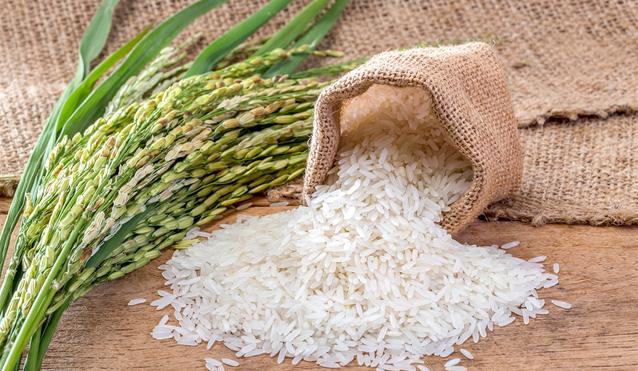
British High Commissioner to Ghana, Harriet Thompson said, “The ECOWAS Rice Observatory will support the growth of the rice industry and increase trade and investment opportunities in the market.”
GHANA – Ghana is set to benefit from United Kingdom’s investment in West Africa’s agriculture sector aimed to reduce dependency on imported rice, ease food insecurity, reduce costs to the consumer, support trade, and create jobs.
Through the Africa Food Trade and Resilience programme, the UK government alongside strategic partners are investing £450,000 to establish the ECOWAS Rice Observatory (ERO) and its national chapter, known as the ‘Ghana Competitive Africa Rice
The CARP was launched in Accra at a ceremony led by its new Chairperson, Mr Yaw Poku, alongside the Chief Director of the Ministry of Food and Agriculture, Patrick Robert Ankobiah, and the British High Commissioner, as well as representatives of ECOWAS, the German development agency, GIZ, and the Alliance for a Green Revolution in Africa.
This new public-private sector platform will identify and encourage reforms to increase investment into the
THE ECOWAS RICE OBSERVATORY WILL SUPPORT THE DEVELOPMENT OF THE RICE INDUSTRY AND INCREASE TRADE AND INVESTMENT OPPORTUNITIES.

MOROCCO — The Board of Directors of the African Development Bank has approved a €199 million (US$194 million) loan to finance Morocco’s Competitive and Resilient Cereal Development Support Program (PADCRC) in an effort to reduce the country’s reliance on cereal imports.

This new operation is set to improve the efficiency and climate resilience of Moroccan cereal production to preserve domestic food security and cut rising import bills. It also provides for structural reforms that will lead to more efficient and resilient production systems.
“With this new program, we share a strong ambition to strengthen the performance of the cereal sector and consolidate its climate resilience through renewed governance,” said Martin Fregene, Director of the Agriculture and Agribusiness Department at the African Development Bank.
He added: “Our support consolidates previous achievements which, over more than a decade, have enabled the agricultural sector to move from a production logic to a transformation dynamic, which creates many more jobs in rural areas.”
Achraf Hassan Tarsim, the Bank’s Country Manager for Morocco, said the loan will help increase cereal productivity by 50%, reduce cereal imports by 20% by 2030 and increase farmers’ incomes. “In sum, the project will value and create more jobs for rural youth and women,” he added.
INDIA – LT Foods, one of India’s largest agro-processing firms, has achieved full ownership of popular rice company Dawaat Foods after acquiring the shares it did not previously own from Saudi Arabia’s state agricultural fund Salic.
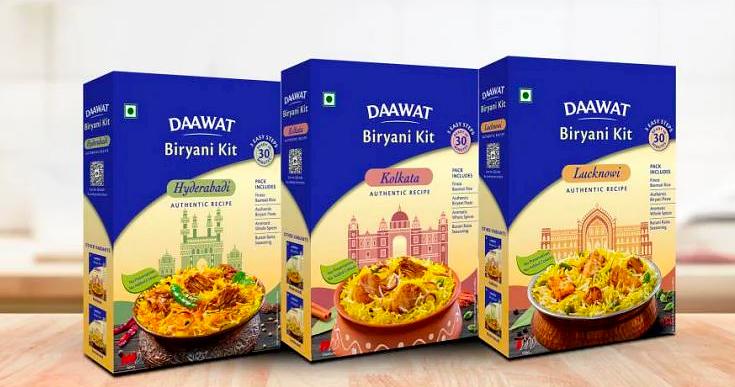
Prior to the agreement, Salic controlled a 29.5% stake in the Indiabased rice company which it now cedes for a 7.89 direct stake in LT Foods and a further 1.33% from the Indian firm’s owners.
will now be owned by Salic amounts to SAR208m (US$55.4m).
LT foods plans to use the proceeds from the deal with Salic to pay for the stake it is buying from Salic which is valued at US$21.7 million.
Following the transaction, LT Foods’ owners will now hold 51% of the business while 39.78% of the shares will be in the hands of public shareholders.
LT Foods said the new share agreement will “accelerate” the Indian firm’s “organic and inorganic expansion plans across business segments [and] give a boost to its future growth plans, specifically in the Middle East and Saudi Arabia”.
Vijay Kumar Arora, LT Foods’ chairman, said: “Our partnership with Salic is strategic in nature and goes beyond financial investment.
We have developed a deep understanding of the needs of consumers in the Middle East related to food products and it will open doors for LT Foods to further strengthen its presence in this segment.”
According to a report by Just Foods, the total 9.22% stake in LT Foods which
As well as basmati rice supplier Daawat, LT Foods owns the Royal and Heritage rice brands, Ecolife rice and pulses, the Devaaya bread flour line and Kiri Kiri Japanese snacks.
PRIOR TO THE AGREEMENT, SALIC CONTROLLED A 29.5% STAKE IN THE INDIABASED RICE COMPANY WHICH IT NOW CEDES FOR A 7.89 DIRECT STAKE IN LT FOODS
USA – The American Feed Industry Association (AFIA) has urged the Food and Drug Administration’s Center for Veterinary Medicine (CVM) to regulate feed ingredients as feeds and not drugs as it is the case.
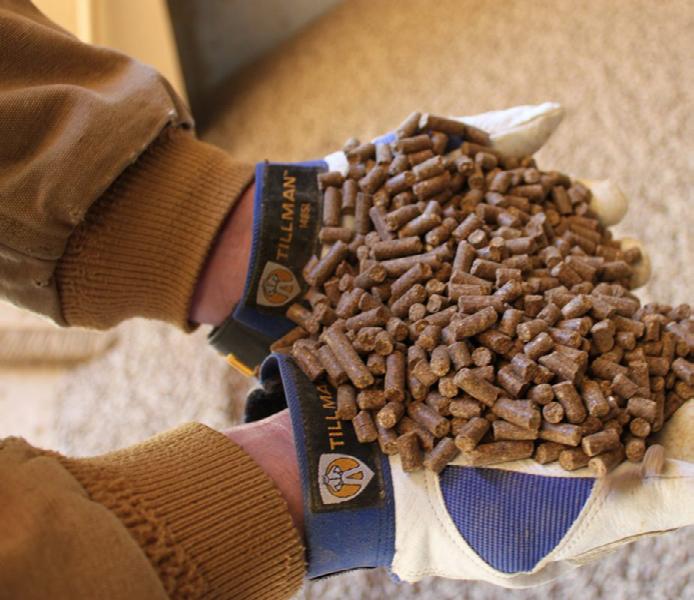
In its submission to the agency, the association noted that the current framework lengthens the time feed ingredients with environmental or production claims from make to market.
“The FDA is long overdue in allowing U.S. farmers, ranchers, and pet owners to access novel animal food products with environmental, production, animal well-being and pre-harvest food safety benefits claims,” AFIA’s President and CEO Constance Cullman said.
He noted that a change in the regulatory framework is central to improving the health of animals, incentivizing innovation, and competing in a global marketplace.
“If we are serious about helping the
United States meet its ambitious 2030 methane reduction goals of 30% below 2020 levels, then these products need to be in the CVM’s review process by 2024 so that they can be approved and make a difference on farms by that deadline,” Cullman added.
Currently, feed ingredients with known efficacy to reduce enteric methane emissions in cattle cannot be sold with marketing claims for methane
reduction in the United States due to the existing CVM policy.
This puts US farmers and ranchers at a disadvantage as their peers around the world can knowingly and legally use them for their environmental benefits.
AFIA further noted that the current CVM policy is challenging and narrow making many of AFIA members unable or unwilling to submit their functional feed ingredients for review at the FDA.
Ironically, the same producers have products with functionality beyond the typical taste, aroma and nutritive value historically associated with animal food approved in dozens of other countries.
Instead of current rigidness, AFIA has asked CVM to adopt a modernized, science-based policy that utilizes the food additive petition, the generally recognized as safe (GRAS) process and Association of American Feed Control Officials’ ingredient definition pathways to support industry innovation in safe animal food ingredients.
As a Botswana Investment and Trade Centre (BITC) accredited company, with a rich history dating back to 2001 since setting base in the country, Irvine’s produces and supplies 18-million-day old chicks annually through its state-ofthe-art breeder farm and hatchery.
The new facility is aimed to ensure a reliable supply of high-quality feed to both large and small-scale poultry producers in the Southern African country to ensure food security.
“We believe if we can grow our customers’ businesses through supply of top-quality products and training, our business will also grow and this in turn will help grow the businesses that supply us with raw materials,” said Irvine’s Group Chief Executive Officer, Craig Irvine.
BOTSWANA – Irvine’s, regional poultry producer with roots in Zimbabwe, has officially inaugurated its new P56 million (US$4.34m) poultry feed mill in Botswana, with an annual processing capacity of 48,000 tons.

“All our investments are done to the highest international standards to ensure good levels of bio-security and the latest international standards in manufacturing practices which enable us to provide all our customers with quality products.
It is estimated that in Botswana, the small-scale farming sector produces over 11 million chickens per year, generating over P678 million (US$52.5m) in revenue.
Irvines has been producing chicken in Southern Africa since the 1950s and has grown from a single room in a home to producing over 1.5-million-day old chicks per week across Botswana, Mozambique and Zimbabwe.
ZIMBABWE – National foods (Nat Foods), one of the largest food processing companies, in Zimbabwe, is bolstering its presence in the breakfast cereal category with a US$7 million investment in a new facility.
According to William Kapfupi, National Foods managing executive, cereals unit, the new facility will broaden National Foods’ product range, cut the country’s reliance on imports and consolidate its dominance on the local market.
Kapfupi revealed this while overseeing the launch of five new cereal variants including Pearlenta NutriActive cornflakes, bran flakes, and two instant cereals. The product are set to enter the market soon to complement the already dominant “Pearlenta NutriActive” instant maize porridge.
The company is already enjoying a dominant market for Pearlenta NutriActive instant maize porridge which is at 50% market share locally and is expected to grow to 60% with the new range of cereal products.
The new products will therefore complement the existing products, the Pearlenta NutriActive instant maize meal, which drove the company’s volume in the cereals segment to grow by 35% in the 2022 financial year.
Kapfupi said that the US$7 million investment, is not only for the five products but more products are set to be launched next year. He revealed that the company plans to launch a baby food product next year, emphasizing that the brand will be nutritionally relevant for local babies.
Kapfupi says he is confident that the company products can compete both locally and in the region and expects that the new products will start filtering in the regional market by January 2023.
USA — Agricultural commodity trading company Scoular has released its second annual sustainability report, highlighting progress made in the journey towards building a better-forthe-environment business.

In its report, the company shared the steps it had so far undertaken to reduce its carbon footprint and to protect ecosystems through responsible marine sourcing.
Scoular revealed that it had made investments in processes, infrastructure, and technologies aimed at reducing truck emissions in an effort to cut down its carbon footprint. Truck dump times and weighing/scaling times decreased.
The company also created a new sustainability program that incentivizes fishmeal producers to implement longterm sustainability practices that exceed standard certification requirements.
A new safety system was launched at Scoular to improve reporting practices and proactively identify and eliminate hazards. The company also saw a decline in total reportable cases (TRC) of injuries.
To promote diversity and inclusion, Scoular started a third employee resource group, Scoular Ethnicities and People of Color, joining Scoular Women Influencing Culture and Scoular Proud Ally Network. The company also added a paid mental health day for all employees.
For community engagement, every
employee at Scoular now has eight hours of paid volunteer time per year and expanded volunteer opportunities with community parties and giving events at locations worldwide.
In the same vein, the company also developed a board member development program and grew the number of Scoular leaders serving in non-profit board leadership roles.
“I am pleased at Scoular’s progress over the last year and look forward to the year ahead as we build on our strategies to operate with integrity and offer safe, reliable and responsible supply chain solutions,” said Paul Maass, chief executive officer of Scoular.
In 2021, the company publicly launched its sustainability strategy and commitments it aims to reach by 2025.
One year into the strategy, the company has certainly made progress which its proud of and looks to build upon as it continues its journey to a greener working environment.
“As we shifted from the early stages of our sustainability strategy to year two, we experienced tremendous learning about our path to success, while also fostering new partnerships to reach our sustainability goals,” said Megan Belcher, chief legal and external affairs officer at Scoular.
“We are excited to share our progress as we work with employees, customers and partners to benefit the entire supply chain.”
The AFMASS Food & Drinks Market showcases packaged food products from Africa and the World. Sign up today to engage with consumers, corporate buyers from hotels, restaurants and catering (HORECA) and other institutions and more






company lost its battle against a new national health policy that bans the promotion of sugary cereals, such as through “buy one, get one free” deals.
In addition to reformulation, the Culinary and Sensory Centre is also where the company will trial new cereals, test new ingredients, experiment with recipes, and ‘invent the foods of the future’.
UK – American multinational food manufacturing company Kellogg’s has opened a new food innovation center in northern England in an effort to bolster its capability to ‘invent the foods of the future’.
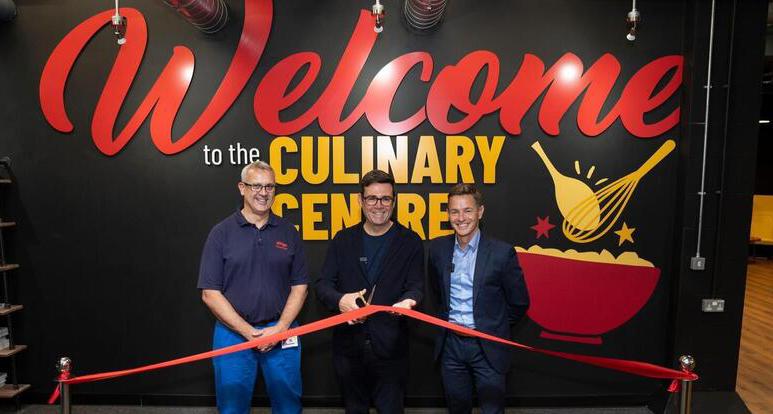
The opening of the center comes as the Battle Creek, Michigan-based cereals and snacks major celebrate 100 years since first launching in the UK.
The company says the Kellogg’s Culinary and Sensory Centre at its Trafford Park factory near Manchester will allow the company to ‘innovate’ and
‘create’ in ways it’s never done before.
“The space will be the source of new products, innovative packaging solutions and reformulation – that will not only be rolled out across the UK but will be seen by consumers across Europe,” added Chris Silcock, Kellogg’s UK vice president.
Upwards of £500,000 has been invested in the hub, which will be home to Kellogg’s team of food developers, chefs, and packaging designers.
Reformulation will be a key focus of the new center, especially after the
GLOBAL – Agricultural commodity trading giants Cargill, Bunge, and ADM are among 13 food companies that have renewed their pledge to end deforestation and help reduce global warming during the just concluded COP27 climate change summit.
The companies signed the Agricultural Sector Roadmap 1.5°C, which according to the signatories “proposes actions that focus on areas where they will have the greatest
impact”.
Coordinated by the Tropical Forest Alliance (TFA) and the World Business Council for Sustainable Development (WBCSD), the roadmap aims to strengthen policies and regulations and encourage farmers and ranchers to protect natural resources.
The roadmap which was presented at the COP27 held in Sharm El Sheikh, Egypt also describes how those companies will collaborate with
governments, supply chain members and financial institutions, to try to expand support for the plan’s commitments.
The other signatories to the roadmap are JBS, Marfrig, Amaggi, COFCO International, Golden Agri-Resources, Louis Dreyfus Company, Musim Mas, Olam International, Olam Food Ingredients (OFI), Viterra and Wilmar International.
THE OPENING OF THE CENTER COMES AS THE BATTLE CREEK, MICHIGAN-BASED CEREALS AND SNACKS MAJOR CELEBRATE 100 YEARS SINCE FIRST LAUNCHING IN THE UK.





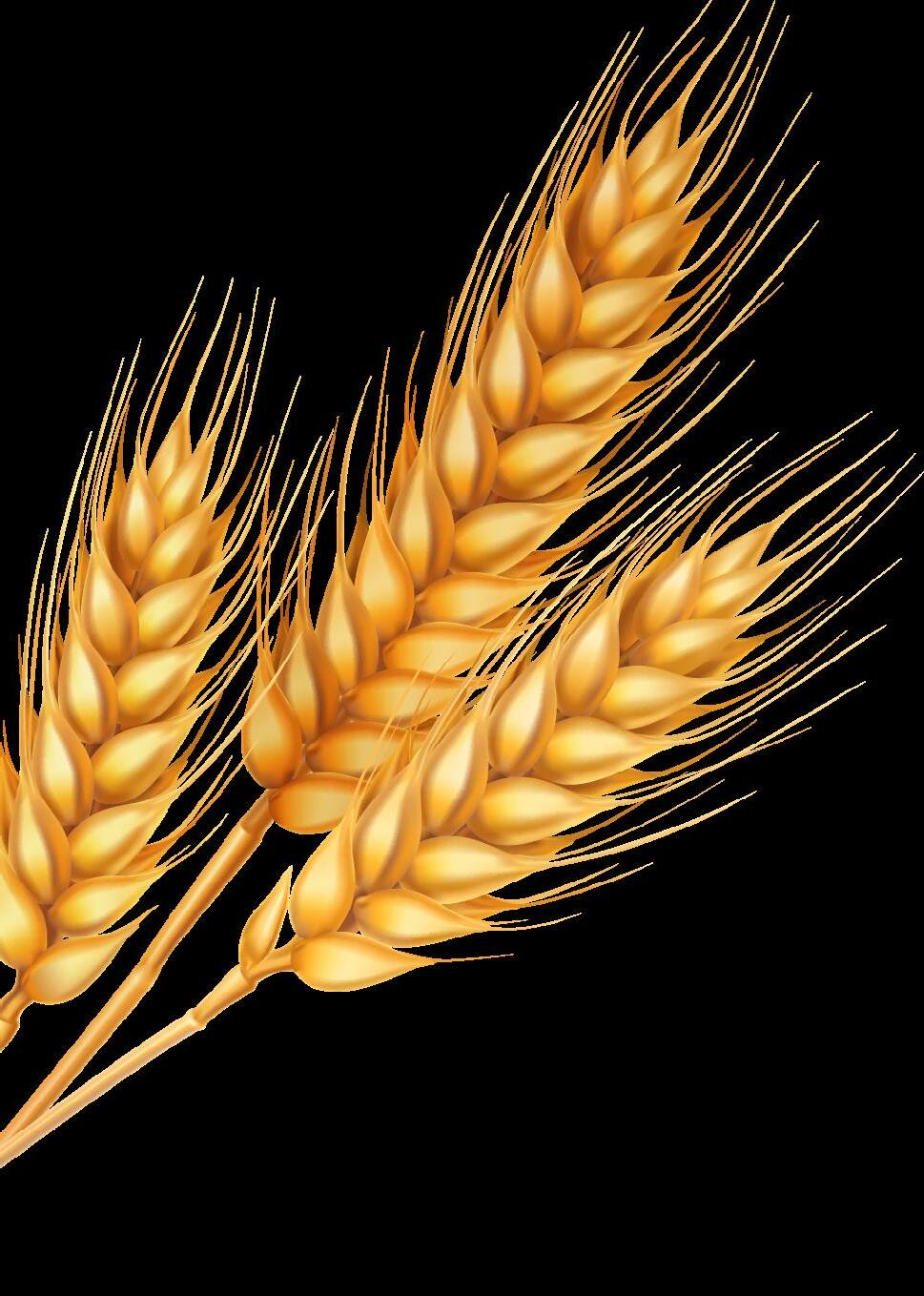
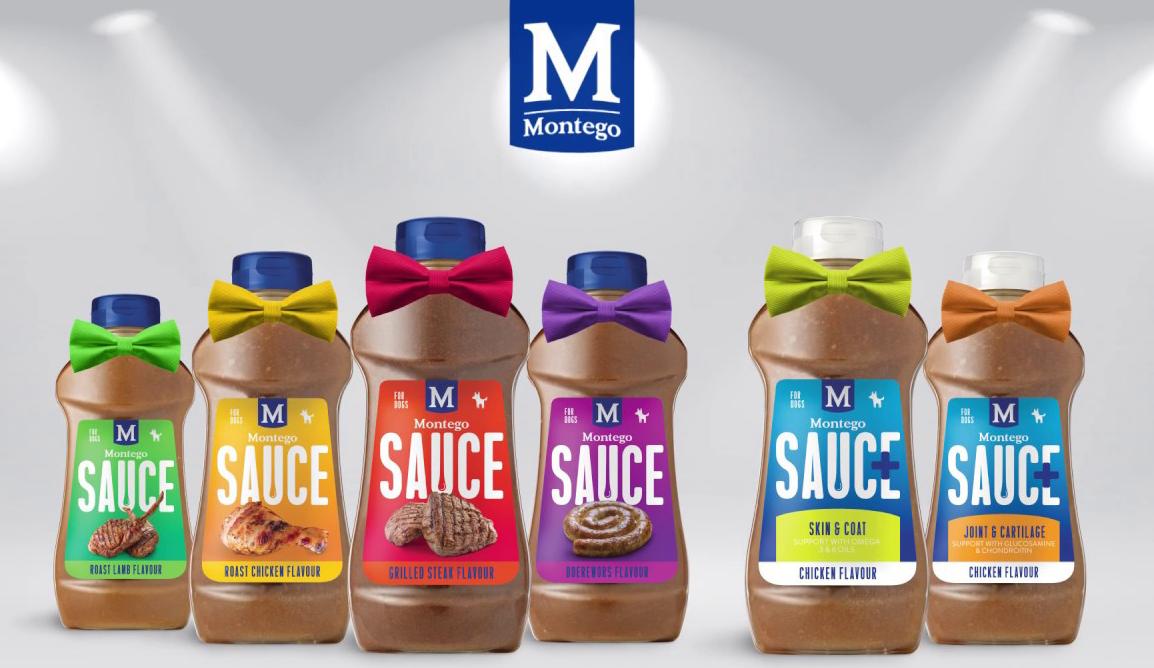
operational warehouse and distribution centre has been built on the premises. This has enabled an increase in service delivery to customers while reducing costs and has cut delivery lead time from this depot by 20%.
The final feature of the new facility is a 1,4002 three-story admin office built to accommodate the 147 existing staff based in Gauteng, with room for future new employees.
SOUTH AFRICA – Montego Pet Nutrition (Montego), Africa’s largest privately owned pet care manufacturer, has completed the construction of its purpose-built facility located in Centurion, Gauteng – South Africa worth R30m (US$1.74m).
The new establishment features a production hub, storage space, distribution center and offices, and is set to consolidate all three of its existing Gauteng facilities into one plant.
The factory will focus on the production of Montego’s Monty
& Me Essential range, as well as manufacturing for contract clients. It was designed to initiate a 100% increase in production capacity, with production forecasted to double when the Centurion facility is operating at full speed, reports Bizcommunity.
The premises is equipped with an onsite laboratory to ensure that the same strict controls and testing processes are carried out, as compared to the main plant located in Graaff-Reinet, the Eastern Cape Province.
In addition to the factory, a new fully
“All decisions during the building process were made with future growth in mind. The decision to combine all three sites into one plant is a significant move for us. This means better customer service, an increase in production and more opportunities for our staff,” says Marco van Jaarsveld, operations director at Montego Pet Nutrition.
It also acquired nine independent depots across the country to maximise the efficiency of deliveries, says Johann Kotze, Supply Chain Executive for Montego. The new depots, along with the 110-vehicle fleet, enables 100,000 tons of pet food produced per year to reach customers safely and efficiently.
Montego has invested over R90 million (US$5.2m) toward factory upgrades over the last five years to meet local and international demand.
NIGERIA – AFEX, Nigeria’s leading commodities market player, has opened its newly built multi-grain processing plant in Kaduna state with an annual processing capacity of 100,000MT.
The new state-of-the-art plant, fashioned with modern grain sorting, cleaning and packaging equipment, also features the states largest single unit storage space with a holding capacity of 30,000MT.
With the new facility, food manufacturing and processing players in the country will have access to quality and readily available raw materials for production of the various value-added consumers goods.
“Our Grain Quality Enhancement Center amplifies our prioritization of infrastructure wins that support the closure of quality and quantity gaps in commodity value chains.
“At AFEX, we continue to pursue our commitment to helping Africa achieve self-sufficiency in food production by building a more resilient food supply chain that provides better market outcomes for producers and consumers,” stated AFEX.
Opening of the new facility follows the company’s recent expansion into Kenya, East Africa’s largest and most diverse economy.

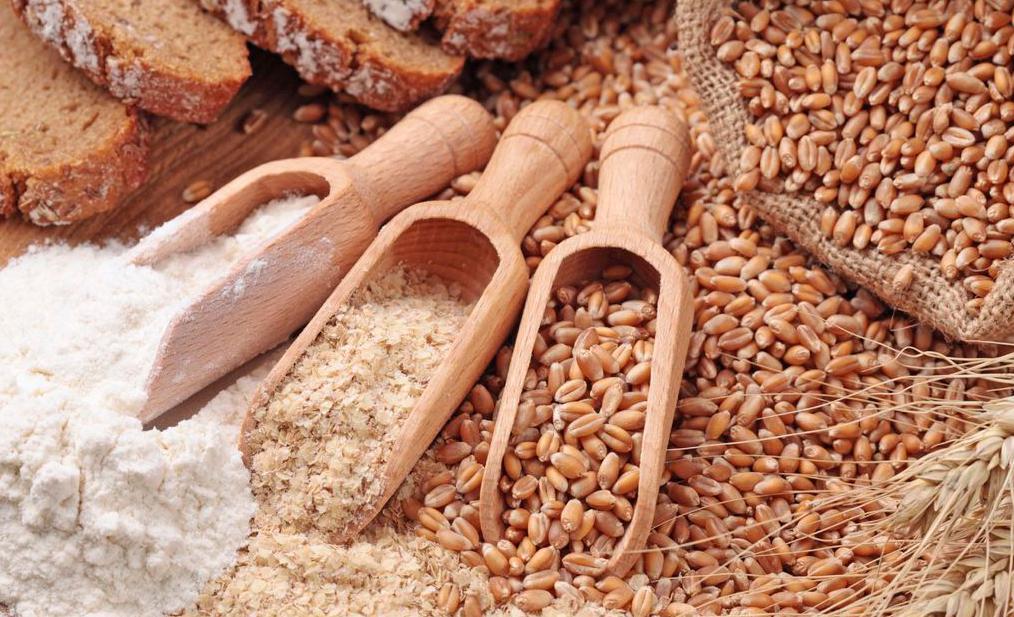
















 ASHISH PANDE Country Head, Olam Agri, Nigeria
ESSAM EL-MADDAH HR & General Secretary Director, Danone Egypt & North East Africa
JUSTIN ARCHER COO East Africa & Group Head of Sustainability, Sucafina SA
CLAUDIA CASTELLANOS Managing Director, Black Mamba
JOACHIM WESTERWELD Executive Chairman, Bio Food Products
MILLICENT A. ADOBOE Co-Founder, Achiever Foods Ghana
CAESAR ASIYO Chief Development Officer, Victory Farms
SAINT-FRANCIS TOHLANG Corporate Affairs Director, Nestle East & Southern Africa
NICO ROOZEN Honorary President, Solidaridad Network
ROZY RANA Managing Director, Dormans Coffee
GAURAV VJ CEO, 260 Brands
BRETT THOMPSON Co-Founder & CEO, Mzansi Meat
ASHISH PANDE Country Head, Olam Agri, Nigeria
ESSAM EL-MADDAH HR & General Secretary Director, Danone Egypt & North East Africa
JUSTIN ARCHER COO East Africa & Group Head of Sustainability, Sucafina SA
CLAUDIA CASTELLANOS Managing Director, Black Mamba
JOACHIM WESTERWELD Executive Chairman, Bio Food Products
MILLICENT A. ADOBOE Co-Founder, Achiever Foods Ghana
CAESAR ASIYO Chief Development Officer, Victory Farms
SAINT-FRANCIS TOHLANG Corporate Affairs Director, Nestle East & Southern Africa
NICO ROOZEN Honorary President, Solidaridad Network
ROZY RANA Managing Director, Dormans Coffee
GAURAV VJ CEO, 260 Brands
BRETT THOMPSON Co-Founder & CEO, Mzansi Meat

The IAOM Middle East & Africa Conference & Expo was successfully hosted in the eastern African nation of Zanzibar in late October 2022, bringing the region’s leading industry stakeholders to network and learn about the latest technologies and trends that they could tap into as they seek new growth opportunities in 2023 and beyond
Held under the patronage of H.E. Dr. Hussein Mwinyi, the President of Zanzibar, who officially opened the event, the 4-day trade show was attended by nearly 600 delegates from across Africa, Middle East, Europe, Australasia and the Americas, with a mix of conference sessions, networking activities and an Expo Hall showcasing the latest technologies from regional and global suppliers to the milling industry.
The conference and expo celebrated it’s coming back to Africa in style, with the 2022 Conference Chairman Mounir Bakhresa, who is also the Managing Director & CEO of Bakhresa Grain Milling, Rwanda, Burundi, Zimbabwe & South Africa welcoming the delegates to the conference and
to Zanzibar. He urged delegates to take some time to savour the unique attractions Zanzibar offers: beautiful, white sandy beaches, turquoise water, friendly people, and abundant business opportunities.

During the packed opening ceremony, President H.E. Dr. Hussein Mwinyi welcomed the delegates and urged them to consider investing in Zanzibar, adding that the country offers unique opportunities not only in tourism and hospitality, but also manufacturing and other industries.
IAOM MEA partnered with the award-winning Hotel Verde Zanzibar, which is one of the greenest hotels in the island, to host the event, with the hotel hosting the conference sessions, lunches and the expo. The other networking evening activities were hosted at some of Zanzibar’s unique attractions.
The conference program offered at the event offered several topics of interest and value to the industry stakeholders in attendance, with some of the best attended sessions being on the daily commodity trade issues, considering the impact of the Ukraine-Russia war and rising inflation and food costs
globally.
The opening session panel discussion brought together Dan Basse, the President & Founder of AgResource; Jean-Francois Lepy, CEO Soufflet Negoce by InVivo; Andreas Rickmens, the COO Ameropa AG; Reinier van Hanswijck, Senior Marketing Manager - Grains, Viterra and Rowan Barbeau, Senior Manager, Bunge South Africa to talk on the topic “Wheat Caught in the Geopolitical crosshairs of the Black Sea and World Food Inflation: What Next?”
The third day panel discussion, which was titled Middle East & East African Wheat Market Outlook: Demand Growth meets tightening Global Exporter Supplies had Dan Basse, the President & Founder of AgResource; Mounir Bakhresa; James Wild, Managing Director, Wild Agri DMCC; Ibrahim AlHazaa, the Executive Director, Al-Hazaa Investments Group; Rajiv Nigudkar, the Head of Trading, Al Ghurair Resources and Jeffrey McPike, Analyst at WASEDA Commodities LLC., discussed on this touchy subject matter to a full house of delegates.
Apart from the panel discussion sessions, the conference sessions had daily technical sessions, including on such topical issues such as new technologies in instant noodles and maize milling (Buhler), using local grains in volatile wheat markets (Muhlenchemie), quality control of wheat and starch (Brabender), next generation milling systems (Alapala), new pasta process technologies (FAVA SpA.), and the right strategy for storage to boost food security (PETKUS).
Other sessions included presentations on long spaghetti
processing (GEA), reinventing the mill (Omas), open-mouth bags with valve bag filling technology (Behn+Bates) and flour excellence sessions addressed by Eurogerm, AIT Ingredients, Mirpain and Bakels East Africa.

The 2023 edition of the IAOM Middle East & Africa Conference & Expo is slated for Egypt, according to the association.














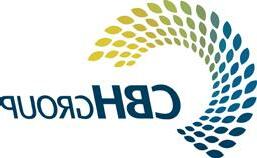










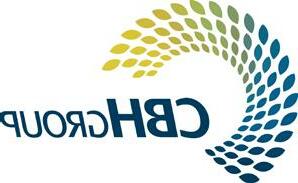












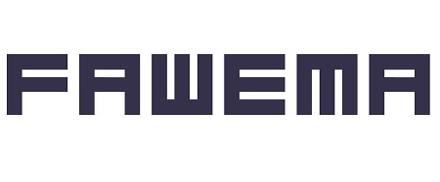











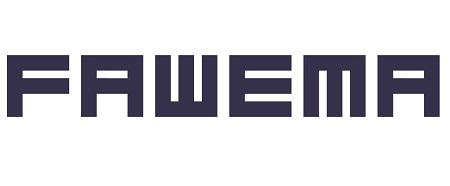



































The evening activities served various delicacies from Zanzibar, including the refreshing






































































































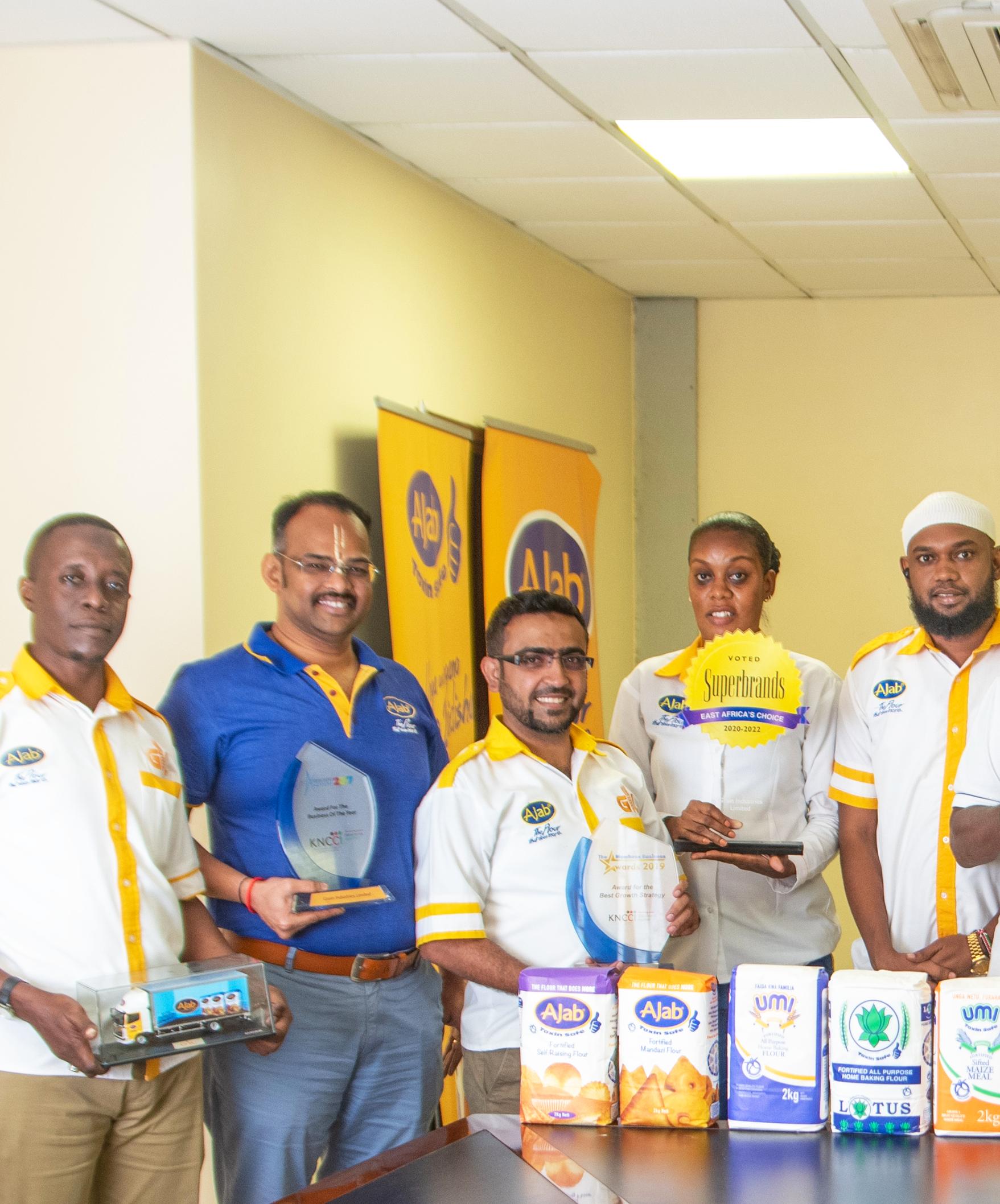
Grain Industries Ltd is one of the major players in Kenya’s grain milling industry. As the miller celebrates its fifth anniversary, Milling Middle East & Africa magazine made a visit to the plant, which is located in the coastal city of Mombasa, to talk about the company’s journey and its future plans with Munir Thabit, the CEO and Patrick Muriuki, the General Manager.

The grain milling industry is one of the most vibrant in Africa – and by the Eastern African perspective, one of the oldest. The sector in the region has made significant progress over the last decade, with new investments in new plants and upgrades, new product innovations, while the pace of technological advancements have made the region one of the most vibrant.
No company represents the changing face of the milling industry in Eastern Africa better than Grain Industries Ltd (GIL). As it celebrated its fifth anniversary in August 2022, GIL, the maker of the popular Ajab range of wheat and maize flour products, the company’s CEO Munir Thabit took time to reflect on the company’s journey from 2017 to the present.
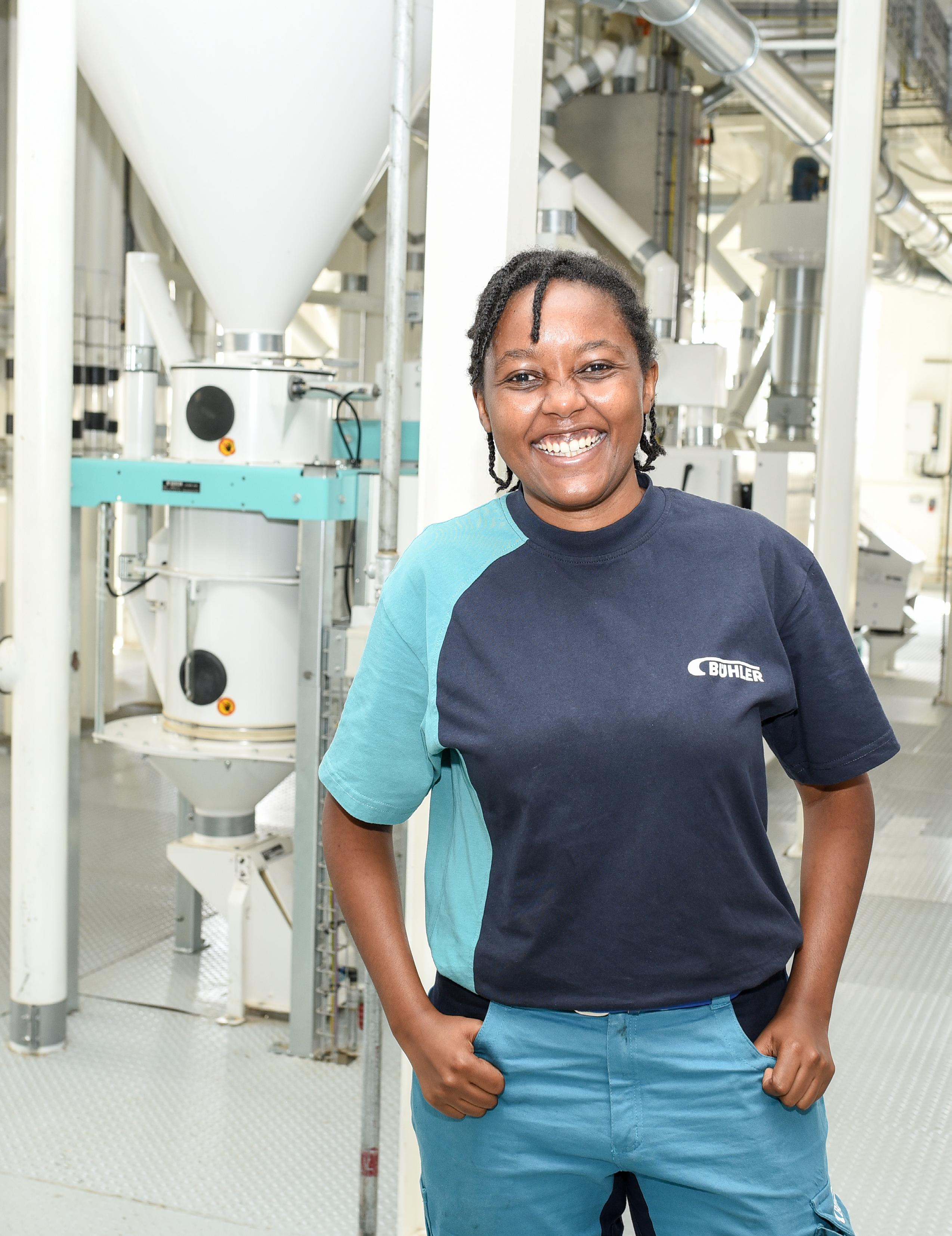
“We opened our doors on 11th of August 2017, the day after the General Elections in Kenya, when most businesses were closing due to the uncertainties brought by the elections,” he began the story, alluding to Kenya’s historically hotlycontested elections. Kenya is Eastern Africa’s most critical economy, and continues to be the
milling sector’s most important in the region.
Located at Shimanzi area within the Mombasa Island, the GIL factory is situated within the busy part of the coastal city, a short distance from the Mombasa port. Heavy trucks haul goods from the port into Mombasa and its environs and further inland into Kenya and the Great Lakes region of Africa day and night, and with it, GIL ships its range of products into the vast retail and distribution network it has created across Kenya.
A former banker with a short stint in the Armed Forces, Munir is appreciative of the huge strides the miller has made in the short time since they opened the plant – and the vast potential that lies ahead. “We are the biggest wheat miller by capacity and market share. It took us less than 60 months to get to where we are and we can only be thankful to our customers for making us No.1.”
The company’s General Manager Patrick Muriuki, a veteran of the milling sector in the region, and who took the Milling Middle East & Africa team around the facility with a sense of pride on his



face, says that the mill has lots of unique features, chief of which is the 2250 MT per day installed capacity wheat mills, the largest by any miller in Eastern Africa at a single location.
“We opened the mill with the 750 tonnes, that is our Mill A in 2017. To fully appreciate the progress by the team in the last 5 years, we have become the biggest miller with the largest milling capacity in Kenya through God's grace and inspirational leadership from our investors. Currently, there is no single mill that has more than 1700 TPD in Kenya, where several groups operate in, with some of them nearly 100 years old, other than our plant. Within 36 months after we opened Mill A, we set in motion our plans for expansion and added a second 750 TPD plant, our current Mill B and simultaneously added the third 750 TPD plant, our Mill C. We are currently having a total installed capacity of 2250 TPD as we celebrate our 5th anniversary,” Munir informed us.
He revealed that it was not an easy decision by the management team and the investors to invest in the 750 TPD mill at the start of the operations, since at that time a mill of such a scale had not been seen before in Kenya, but that it was it was a deliberate and well thought out decision, which was linked to the strategy of the business, in terms of the sales and innovation strategies. The miller also entered into the maize milling
business by installing a 400 TPD maize milling plant – this was done at the same time Mill B and C were constructed, he adds.

“I appreciate the team’s efforts to get us where we are today, since from the time we started our operations in 2017, we soon ran into supply issues; the demand for our products was much higher than we could meet with the plant’s installed capacity. We therefore had to expand our operations substantially to meet exploding demand of the products.”
“Our company’s main mission is to consistently improve the living standards of our consumers by providing them with world class quality products and services as well as value of money. We have achieved this ambitious goal through a rigorous product quality framework built in our systems right from raw material sourcing to the mill and into the marketplace. We also have a nation-wide distribution set up that builds on our strength of partnerships with supermarkets, distributors and small business operators across the country, as well as our own-managed distribution points and a market feedback mechanism,” explains Benson Ochieng’, the Sales & Marketing Manager.
The Ajab brand of all-purpose home baking flour is the company’s flagship. Easy to pronounce
OUR MAIN MISSION IS TO CONSISTENTLY IMPROVE THE LIVING STANDARDS OF OUR CONSUMERS BY PROVIDING THEM WITH WORLD CLASS QUALITY PRODUCTS
BENSON OCHIENG, GIL SALES & MARKETING MANAGER
and remember by consumers across the board, Ajab has become the consumers’ favourite due to its high quality and excellent absorption properties, ensuring that the user gets real value for their wheat flour, whether they would like to make chapati, cakes, biscuits, muffins or bread, Ochieng’ adds.

The company has over the last five years expanded its Ajab branded products beyond Ajab All-purpose home baking flour to include Ajab Chapati flour, Ajab Mandazi flour and Ajab Atta Mark 1 flour, to respond to specific needs of the consumers in Kenya, who are increasingly seeking specified products for their cooking purposes. The Ajab maize meal has also created its space within the highly competitive maize meal market since its launch.
Further the company has the Umi and Lotus home baking flours that meet the needs of the value-oriented customers in the country. To cap it all, the company’s Asili wheat flour brand is availed to bakeries, noodle and biscuit manufacturers across the country.
“Our extensive distribution network has enabled us to avail our range of products across the country over the last five years, and we are thankful to our distributors, supermarkets and other partners for making us No.1 within a very short time. We are number two in terms of depots
and branches in Kenya, with depots in Malindi, Ukunda, Mariakani, Voi, Nairobi, Kitui, Emali and Kisumu. We also partly do the last mile delivery and have partnered with distributors and other players to ensure that our products reach the small traders and businesses across the country.
While lauding its customers for making GIL and its list of brands the leaders in Kenya, Munir also says that the impact of the business, apart from job creation has been impressive, apart from the company being the highest tax paying miller in Kenya.
Munir notes that the recipe to success of GIL has to do with more than having the iconic Ajab brand but various strategies put together by the investors and the management which have enabled the team to achieve many accolades, including becoming winners of several awards in the country.
“We opened our doors on the 11th of August, 2017 and by December 15, we received our first accolade as the Best New company from the Kenya Chamber of Commerce, Coast region, where we also won in the Customer Focus category and were second runners up in the Best Employer category,” he underscores. The
We do not believe in trial and error, we believe in getting it right the first time.
company has since won many other awards.
“We are also the first mill in the country that is ISO 22000 certfied, the most important food safety certification. We are also ISO 45001 certified, which is for occupational health and safety. We are also ISO 14001, which is for environmental systems management and are the only mill in East and Central Africa that has a fully fledged microbiological laboratory with the ability to detect all the various types of toxins.”

“These, and many more reasons, is why we are the only millers in Kenya who have a thumbsup sign on our products with the words ‘Toxin Safe.’ Most mills have a general laboratory but ours is an actual microbiological laboratory and both the wheat and the maize laboratories meet the ISO 17025 requirements. We are currently working with the Kenya National Accreditation Service (KENAS) for the purpose of accreditation of our laboratories to qualify as a commercial lab just like any other external labs for use by other industry stakeholders in the region.”
He adds that it's no longer adequate for consumers to think that the products are safeit is important to communicate to them that the company has done all it can to assure the food is safe for the consumer.
“You will notice that so far, none of the GIL brands have been withdrawn by the authorities from the shelves yet, because we do not believe in trial and error: we believe in getting it right, first time. That's why we have invested significantly in our laboratory infrastructure and people over the
years of our operations.”
On the day of our visit to the plant, the quality assurance team were busy testing out their flour brands by baking and cooking chapatis and other baked goods and snacks at their onsite facility.
The mill’s location near the busy port of Mombasa means that the installation team had to be creative to ensure that the region’s largest mill by capacity could fit into the relatively small piece of land, and leave some space for offices, storage and logistics, according to Muriuki.
He explains that the installation of the highcapacity mill in one location is a plus to the team and the company. “Having one centralized milling plant has lots of advantages. What we have is a management team that is all located at one location – the CEO, General Manager and other key management are located within the plant, making it easier to manage the operations of the mill and other issues.”
Muriuki says that GIL’s engineering team together with equipment supplier Buhler worked together from the onset to do a marvelous job and have continued to do so, whenever new projects have been initiated at the mill. One of the interesting innovations is the location of the finished products dispatch area, which is tucked in nicely below the maize milling plant.
“Kenya is a net importer of wheat, importing more than 80% of its demand, with the port of Mombasa handling the bulk of the imports. Our location near the port reduces on our supply chain costs. It is also much better to transport finished products from Mombasa to the markets in the rest of the country, which is a significant advantage to us,” Muriuki explains.
Muriuki is particularly proud of the excellent design and engineering of the entire mill and the high level of automation in all various sections including the weighbridge and finished loading systems.
Considering the space constraints, GIL’s raw materials - maize and wheat - are largely stored out of the mill, with regular planning with the raw materials team every day, to ensure no pileups occur at the reception area, as the trucks arrive with the load.
“Every day, we already know the trucks that will deliver raw materials to the mill since they are pre-booked. At the weighbridge, as each truck approaches, a camera picks the registration of the truck and uploads the details into the weighbridge’s system, after which the gate of
WE ARE THE FIRST MILL IN THE COUNTRY THAT IS ISO 22000 CERTIFIED, THE MOST IMPORTANT FOOD SAFETY CERTIFICATION.
MUNIR THABIT, GIL CEO


the weighbridge opens to let the truck into the weighbridge. After the weighing process is done and all the details are captured into the system, the truck enters an enclosed raw material receipt area that is completely closed, ensuring that we manage all the dust that may have come in with the grain. This is important for us to have a clean environment and to ensure we have minimal loss of materials, if any.”
The other unique feature of the mill is the finished product loading system, which uses a minimal number of staff and eases the loading process, thereby fastening the loading while reducing any chances of staff injury. The system also captures all the required product traceability data for use by the company, thereby improving efficiency and food safety.
The 7-floor mill is fully automatic and runs on Buhler’s Wincos system. Taking a walk within the mill with the General Manager, one cannot fail to notice the high level of hygiene and cleanliness across the mill, and the pride on the faces of the employees you meet.
“Our mill is one of the most automated mills in Eastern Africa. On any shift, we have about seven staff who are actually involved in the operations of the mill. The maximum staff at the mill responds to the number of floors in the mill. My role is to guide at higher level on the operational issues of the plant, while also coordinating on raw material sourcing, engineering and maintenance activities of the mill,” Muriuki enlightens us.
“I am supported by a qualified team of young engineers – electrical and mechanical engineers – plus the support of the quality assurance team. All our operations team are qualified professionals with university degrees and have a number of years of experience.”

The mill has a lift system to enable staff to attend to issues whenever they arise. “I can tell you that the lift is not for luxury, it is to enhance the efficiency of the work.” It also has an in-built crane to aid in the hoisting of heavy equipment.
Muriuki says that GIL recruited young university graduates and then trained them on the job. “When I suggested to the company that we bring in new graduates, I didn’t receive an enthusiastic support, with many concerned how I was planning to run such a huge mill with such inexperienced staff. I said that I would bring them into the company and train them on how to do things right, not any other way.”
Munir reveals that recruitment, training and retention of the right staff has been one of the bedrocks to the success of GIL, with the company believing in having staff who are qualified and have passion for the job.
The firm also believes in uplifting its lower cadre staff into higher levels through mentorship and training, with several former casual or contracted staff already taking higher responsibility within the company. “On training
OUR MILL IS ONE OF THE MOST AUTOMATED MILLS IN EASTERN AFRICA.
PATRICK MURIUKIU, GENERAL MANAGER GIL
and building the capacity of our staff, we have done quite a lot. The ISO certifications themselves require training, and right now, the staff are undergoing the final stages of ISO 9001, which is on quality management. This will be the fourth ISO certification for the company in five years, and in many cases we have gone beyond meeting basic requirements to meeting international requirements as well. We are the only mill that that supplies to American fast food restaurant KFC in Kenya, Uganda and Rwanda, because they have their internal requirements, including the product meeting strict quality requirements.
“Apart from the training, there's a lot of transparency in the way we do things at GIL. It's not a one man show – it is teamwork and and we believe in empowerment of our people. We believe in developing our staff because if you consider staff empowerment as a cost centre and a source of costs, you will work towards cost reduction; but if you look at your staff as assets, you will work towards developing them,” he empahizes.
“We are a world class mill because we compete at the world class level. Geographically, we are in Kenya, but if you go anywhere in the world we have one of the most modern mills. We believe in going for the best. If you want to give the best, you have got to have all the best in order to have the best final product.”
As we sought his revelations into the next 5 years, Mounir was contemplative for a moment,
before gazing ahead with the air of purpose. “As we forward into the next 5 years, we intend to be a fully fledged FMCG company in Kenya and the region. Our vision and focus are at another level, as we seek to take advantage of our strengths and the many emerging opportunities in the country and beyond,” he reveals.
Munir, who is a board member of the Cereal Millers Association, believes that the milling sector in Kenya has gone through tough times, especially in the sourcing of maize, which is largely sourced locally or from neighboring countries. He looks forward to Kenya streamlining the procurement of maize to bring more certainty in the process.

“While each individual company has its own sourcing policy, all of us face an extremely challenging environment in terms of availability of maize all year round at affordable prices, and quality is another issue that requires all the sectoral players to come together to ensure consumers everywhere have access to quality, nutritious and safe maize meal products. For example, quite a number of trucks that we do reject because they do not meet our quality standards due to our standards on aflatoxin, end up at someother millers.”
Asked to make a final statement to the company’s customers, Munir had this to say: “We are passionate about what we do. We are ethical about what we do, we believe in our products and our personnel. We don't take our customers for granted,” he concluded.
MMEATanzania has the potential to become the grains basket of Eastern Africa due to rising demand in neighbouring countries such as Kenya, vast arable land suitable for agriculture and copious amounts of water and suitable soils. With lots of underutilized natural resources - 76 percent of the arable land suitable for agriculture has not been cultivated – the country is one of the African countries that could be the answer to the food insecurity issues that bedevil the Continent.
With the right government policies, the adoption of new technologies and enhanced investments in agriculture, analysts contend that Tanzania could feed its people and become a regional supplier of maize, sorghum/millet, sunflower, rice, legumes and other agricultural goods in a few years.

In this review, we take a deep dive into the production, consumption and trade trends; government policies and
the future of the grains industry in Tanzania.
Tanzania is the second largest producer of maize within the Eastern Africa region, where regional supply has been declining since 2019/2020 due to poor rainfalls and conflict-related disruptions, especially in South Sudan and Ethiopia.
According to Reliefweb, declining production levels have been reducing the volume of maize available for regional trade in surplus-producing countries of Uganda, Tanzania, and
Ethiopia, which is projected to be 43 and 55 percent lower than 2021/22 and recent five-year average levels in 2022/23. Conversely, in maize deficitproducing countries (Kenya, Somalia, South Sudan, Rwanda, and Burundi), the 2022/23 requirements are expected to be 45 and 63 percent higher.
Tanzania could tap into the rising deficits in the region but is hampered by its overreliance on rain fed agriculture and low productivity of small holder farmers, who make up more than 90% of its total production of maize.
According to the USDA FAS, maize production in Tanzania in the 2022/23 is
forecast to decrease by about 16 percent to 5.9 million metric tons (MMT) due to drought conditions, fall armyworm infestations, and high fertilizer prices. The drought conditions also forced a fraction of the farmers to switch to alternative crops such as sunflower and cassava, particularly affecting the Southern Highlands region which produces more than half of Tanzania’s corn supply.
The USDA forecasts that in 2022/23 food, seed, and industrial consumption of maize is forecast to increase 1 percent to about 5.6 MMT largely due to higher demand from a growing population,
which is growing at an annual rate of 2.9 percent; but increases in consumption will be limited by domestic production declines. Feed and residual consumption will increase 8 percent to 700,000 MT as Tanzania’s poultry sector increases output to supply a rebound in Tanzania’s tourism, hotel, and restaurant sectors, as COVID-19 conditions improve and travel to Tanzania bounces back.
Tanzania’s annual per capita consumption of corn is roughly 135 kilograms, with white maize providing 80 percent of dietary calories and more than 35 percent of utilizable protein in the country.
Maize exports from Tanzania are forecast to decline sharply to 100,000 MT in 2022/23 from 800,000 MT as Tanzania’s lower supply is directed to domestic consumption. In September 2022, Tanzania’s government dismissed claims by Kenyan traders that it had frozen the issuance of new maize export permits, urging them to follow procedures. “Tanzania hasn’t barred issuance of permits for maize exports and it is not planning to do so. Traders should follow crop export procedures including securing crop export permits that are issued free of charge,” said Agriculture Minister Hussein Bashe. Agricultural produce exporters, he said, are required to secure an export permit and a phytosanitary certificate. Foreign exporters are required to register their companies in Tanzania.
Maize imports are anticipated to remain flat at 20,000 M, which is predominately imports from South Africa and Zambia for seed use, yellow corn for animal feed and corn products such as corn oil and breakfast cereals.
Despite being a key maize producer, the state of food insecurity in Tanzania is not secured, since maize which is the most important agricultural crop has seen stagnating growth in the country. According to the 2021 the

The government and private sector investments in storage capacity continue to grow significantly.
Government of Tanzania’s Comprehensive Food Security and Nutrition Assessment, 14 of Tanzania’s 172 councils experienced crisis levels of food insecurity, with 20 to 30 percent of the population in these counties experiencing high levels of acute food insecurity in 2021.

The subject matter of GM foods has been one of the most important discussion topics in Eastern Africa, following Kenya’s lifting of the 10-year ban on the production, consumption and trade in GM foods in late 2022. The government of Tanzania announced its intentions to step up vigilance against the importation of biotech crops in response to the announcement by Kenya, reinforcing its longheld belief that they are not welcome in Tanzania.
Former Minister of Agriculture, Prof. Adolf Faustine Mkenda had previously issued a directive to halt all GMO research trials in the country, expressing the government’s concern about creating seed dependence on foreignbased corporations, in January 2021. “Tanzania does not allow GMOs, because we have enough better seeds. We will protect our natural seeds, and the government will work together with our research centres to ensure we get better seeds,” he said at the time.
“We are not open to GM technology,” said the current Agriculture Minister, Hussein Bashe, continuing with his predecessor’s sentiments, adding that Tanzania does not promote or commercialise genetically modified crop varieties, as the country’s Hybrid and Open-Pollinated varieties are performing well.
“Currently, issues related to biotechnology
IN NUMBERS 55m US$
LOAN FROM POLAND FOR CONSTRUCTION OF 8 SILOS

The government and the private sector investments in storage capacity continues to grow significantly to reduce post-harvest losses and to manage grain stocks and prices that swing back and forth across the year. In 2017, the country received a US$55 million loan from the Government of Poland to construct grain silos in eight zones, with completion dates expected by end of 2022/23. When complete, NFRA will be able to store 546,000 MT of maize per year, from the current 30 storage facilities with a total storage capacity of 246,000 MT.
The silos, operated by the National Food Reserve Agency (NFRA), are being set up at Babati (Northern Region), Dodoma (Central Region), Makambako (Southern Highlands), Mbozi (Southern Highlands), Shinyanga (Lake Region), Songea (Southern Highlands), Sumbawanga (Southern Highlands) and Mpanda (West Region). Once complete, the government says the Agency will add more produce to its reserves, apart from the current maize, sorghum and rice.
are being widely researched so that people understand its handling and control as far as data collection and analysis are concerned,” he said. “But such trials will only be allowed for academic purposes, which in turn would help the country and its people to have a broad understanding
of genetically modified varieties, especially the benefits and impact on the environment.”
According to the USDA, Tanzania’s wheat production in 2022/23 is forecast to fall from 100,000 MT to 65,000 MT due to the prevailing drought conditions, while the area harvested will drop 14 percent to 60,000 hectares, as farmers switch to beans in the Northern Highlands and to beans and peas in the Southern Highlands due to delayed rainfall. High fertilizer prices will likely deter proper fertilizer application and further suppress yields.
Wheat consumption will see a 2 percent increase in 2022/23 to 1.29 million metric tonnes due to higher levels of home baking, urbanization, and a growing middle-class. The country has witnessed a shift towards wheat consumption in urban and peri-urban areas, with urban areas accounting for 80 percent of its consumption.
As major urban centers like Dar es Salaam, Mwanza and Arusha create long-term demand growth for wheat products, there has been an exponential expansion of wheat processing facilities such as milling plants and bakeries.

The milling sector is led by the Azam Group, which has several milling plants in Dar es Salaam and Zanzibar. The Group’s recent investments include the expansion of its Buguruni Flour Mills, with a total milling capacity of 2250 MT per day and its new 400 MT per day wheat mill in the Zanzibar islands. Other significant players include Mohamed Enterprises, Camel Flour Mills and many other players. The animal feed sector is dominated by a large number of small players but a few standout players include the NutriGroup, which is owned by the BlackIvy Group from the US.
According to USDA, Tanzania’s overall wheat milling capacity currently stands at about 10,000 MT per day, compared to 6,000 MT in 2016, a significant growth in about 5 years, as demand for wheat products including flour, pasta, biscuits, and breakfast cereals rise significantly.
In terms of trade, Tanzania is largely dependent on imported wheat from Russia, Australia, Ukraine, Argentina, the EU, and Canada. 2022/23 will see a 4 percent increase in wheat imports to 1.2 MMT due to rising demand and drought-related decreases in domestic production.
The government estimates that in 2022/23, the total demand is 1 million MT.
Rice, an increasingly important part of the diet in Tanzania, after maize, wheat and cassava, will see production in 2022/23 fall 8 percent to 2.3 MMT due to drought conditions, while the area harvested will decrease by 4 percent to 1.1 million hectares.
Tanzania’s rice production has increased over time due to the impact of the 10-year GoT National Rice Development Strategy Phase II (NRDS-II), which has ambitious goals to double rice area to 2.2 million hectares and double productivity by 2030. According to USDA, the NRDS-II has made progress in boosting fertilizer use and expanding milling facilities, while new irrigation schemes are under construction; however, very few are operational as most are still not yet complete or suffer from water shortages.
Rice consumption is forecast to increase 4 percent to 2.59 MMT while imports are forecast to increase dramatically from 50,000 MT to 250,000 MT to offset drought-related declines in domestic production and to meet Tanzania’s growing demand, primarily from Pakistan, India and Thailand.
While exports are forecast to be minimal due to domestic production declines and high local demand this year, Tanzania is increasingly becoming a major source of rice into regional countries including Uganda, Rwanda, Kenya, Burundi, and occasionally Malawi and Zambia, either in the raw form, or increasingly, in processed and packaged formats. This has seen the proliferation of rice millers across the country, especially in the rice growing regions of the vast country. MMEA
CURRENTLY, ISSUES RELATED TO BIOTECHNO ARE BEING WIDELY RESEARCHED SO THAT PEOPLE UNDERSTAND ITS HANDLING AND CONTROL. HUSSEIN BASHE, AGRICULTURE MINISTER
NIGERIA – 5,355,000 MT
Africa’s most populated country is also the largest rice grower. Production volumes increased substantially from 2010 but have stagnated since 2018. With a consumption of 7,450,000 MT, Africa’s largest consumer will import about 2 MMT to meet its growing demand.
EGYPT – 3,350,000 MT

Egypt will consume about 4 MMT of rice, with about 500,000 MT imported into the country to meet the shortfall from domestic production. A major importer of other grains such as maize and wheat, the country has made some significant gains to boost local production of rice.
TANZANIA – 2,300,000 MT
Tanzania is set to produce 2.3 MMT of rice which just falls short of its about 2.6 MMT, meaning that despite the gains in local production, the East African country will still import about 300,000 MT of its demand this marketing year.
02 03 04
MADAGASCAR – 2,752,000 MT
The Indian Ocean Island will produce 2.752 MMT of the white commodity but with a total consumption of 3,420,000 MT. The country with one of the World’s highest per capita consumption of rice at 140 kg per person per year, will have to import about 700,000 MT this year
01 05
MALI – 1,625,000 MT
Mali will produce 1,625,000 MT of rice in 2022/23, falling below its earlier production that surpassed the 2 MMT mark from 2016-2020. With a consumption of 2,350,000 MT in the year, imports of 700,000 MT will have to be bought, largely from Asia.
GUINEA – 1,940,000 MT
Guinea’s rice production crossed the 1 MMT mark in 2008 and will nearly double to 1,940,000 MT in 2022/23 as the country ramps up local production. However, consumption has also seen astronomical growth, jumping from 1.2 MMT to 2.7 MMT in 2022/23, with a surplus of more than 700,000 that is largely exported to neighboring countries
COTE D’IVOIRE – 1,100,000 MT
Cote d’Ivoire has seen its meteoric rise in rice production tumble from the highs of 1.4 MMT around 2015-17 to hit 1.1 MMT in 2022/23 season. Consumption has stagnated at about 2.6 MMT, meaning that it will import a whooping 1.5 MMT from the region and abroad.
SIERRA LEONE – 975,000 MT
Sierra Leone has recovered from the wars of the 1990s to become a major rice producer in Africa, with 975,000 MT in 2022/23, while its domestic consumption stands at 1,395,000 MT, leaving a deficit of more than 400,000.
SENEGAL – 932,000 MT
Senegal is set to produce 932,000 MT of rice in 2023, while domestic consumption is forecast at 2,050,000 MT. Although local production has risen sharply in the last 10 years, the country will continue importing rice, with about 1.2 MMT set for this season
DRC – 890,000 MT

06 07 08 09 10
War-torn DRC is rarely mentioned in the top 10 of any agricultural production list in Africa, but its vast water resources and fertile soils will generate 890,000 MT of rice, which falls just short of its 1,140,000 MT yearly consumption forecast for 2022/23. The country is becoming a major producer of rice, if only peace can prevail.
TANZANIA DRC EGYPT MADAGASCARA previously labor-intensive industry, milling has embraced automation to drive greater efficiency in operations while at the same time enhancing the safety and quality of milled products
 BY MADELEINE ORINA
BY MADELEINE ORINA
In the food sector, where sustainability and traceability are two very important factors, process control is increasingly vital to ensure quality and error-free production. This is especially true in flour milling where large quantities of grain are processed in a day. To maintain operations and keep customers serviced, companies have had to embrace technology and automation.
In milling, automation removes variability by
continuously monitoring production streams for variances in production rates and quality. Dips in rates and quality can be monitored, and in some cases, corrected upstream automatically.
Automation also offers trending and historical data to help management find the most efficient production methods. Equipment condition monitoring can provide an early indication of imminent machinery failure, providing the opportunity for planned maintenance, and
improved uptime.
In the milling industry, new technologies like artificial intelligence (AI), machine learning (ML), and robotic process automation (RPA) are now part of a solid business strategy and have been successfully incorporated in all the stages of the milling process.

One critical factor that has a huge impact on grain quality is moisture content. High moisture content leads to storage problems because it encourages fungal and insect problems, respiration, and germination. Storing grains at the desired moisture continent is therefore key to preserving the quality and safety of the grain.
New, innovative grain moisture monitoring methods can vastly improve the accuracy and efficiency of the process, enabling early intervention measures to be taken to ensure grain quality is always at optimum levels. Online near-infrared moisture sensors are one such technology. They provide rapid and real-time analysis of grains and can be mounted above belts and conveyors or installed in silos and storage hoppers.
“NIR moisture meters follow the principle that water absorbs certain wavelengths of light,” says John Bogart, Managing Director of Kett US. “The meter reflects light off the sample, measures how much light has been absorbed, and the result is automatically converted into a moisture content reading.”
Unlike air ovens or even moisture balances, portable NIR equipment is designed for ease of use. For example, with Kett’s KJT130 Handheld Portable Instant Moisture Meter, the user simply points the instrument at the grains, seeds, or agricultural product. The moisture content is instantly shown on a digital display, with results accurate to .01% in a 0-100% measurement range. Technologies such as machine learning, neural networks, and cloud computing have also seen their integration into novel and innovative approaches for measuring grain moisture content.
A revolutionary example is Scottlandbased automation company Crover, which has recently begun commercial trials of its world’s first bulk grain-monitoring robot, aptly titled CROVER. CROVER burrows into stored grain to identify sub-optimal storage conditions, and also physically mixes grains in situ, which helps avoid
spoilage.
CROVER is remotely operated, with the ability to reach every corner of the grain bulk, meaning workers can avoid performing the risky operation of sampling themselves. Once commercialized, each one of the new robotic devices is expected to be able to save a total of 380 tonnes of grain every year.
Rapid advances have also been made in recent years in visible spectrum imaging, which uses integrated smart sensor systems. We can see these being implemented in smart granaries which are gaining popularity across China.
As an example, Xinglong Granary has more than 400 sensors installed within the 1800 square meter space. The intelligent platform conducts a comprehensive analysis of grain temperature, atmospheric temperature, and atmospheric humidity, and gives suggestions on how to manage ventilation. Forty-five pest traps are also installed at different layers and locations within the granary. The number of pests collected by the traps will be shown on the platform, telling the granary manager which area requires pest control measures.
NIR moisture sensors provide rapid and realtime analysis of grains
IN MILLING, AUTOMATION REMOVES VARIABILITY BY CONTINOUSLY MONITORING PRODUCTION STREAMS FOR VARIANCES IN PRODUCTION RATES AND QUALITY.
`Buhler's recently unveiled optical sorter reportedly delivers up to 50% higher rejection concentrations

"Through the intelligent platform, data collection can be carried out on the gas content and number of pests. We use the automatic nitrogen filling system, which can reduce oxygen concentration in the grains, and kill pests," said Liang Haoran Manager, Xinglong Granary.
While silo cleaning is an essential task in grain handling facilities, it’s also very dangerous. Because of this, manufacturers are finding new ways to reduce manual interference. Sukup
Manufacturing company introduced its 5K and 10K Zero-Entry Commercial Paddle Sweeps to prevent operators from ever entering the bin.
“Paddle sweeps are designed to greatly reduce or eliminate any manual labor that must be done to clean grain out of a grain bin completely,” says Sukup External Relations Manager Rachel Geilenfeld. “This is especially important in large commercial grain bins.”
In addition to being a highly effective floor cleaner, Sukup's paddle sweeps incorporate several safety features and use the company's advanced zero-entry controls system. The company also integrated a plug switch into the center sump that communicates with their controls. This switch will shut down the sweep if a plugged sump is detected.
Not only do these technologies reduce the difficulty of human monitoring, but they also improve the monitoring speed and accuracy of temperature and humidity, save a lot of manpower and material resources, and improve management efficiency.
The earliest conveyor systems originated in the 18th century when the first conveyor belts were made from leather or canvas and supported by wooden frames. Today a wide range of materials for conveyor belt systems exist and with the increasing popularity of robotics, conveyors
DIGITAL SORTING HAS ENABLED THE SORTING OF GRAINS BEYOND VISUAL SURFACE PROPERTIES BY MAKING IT POSSIBLE TO ANALYZE AND IDENTIFY EACH KERNEL IN A BATCH AND GRADE THEM ACCORDING TO INTERNAL QUALITIES
have become increasingly computer controlled and automated. Automated conveyor systems are equipped with sensors, bar code readers, weight sensors, RFID tags, camera systems, and other technologies to track materials’ movement and perform tasks such as maintenance and inventory management.
Key Technology’s Iso-Flo vibratory conveyors work in conjunction with different types of sensors and systems, including weighing belts, load cells, and product height sensors, that transmit data to the control system about products flowing through the line.
When it comes to sorting grains on a conveyor line, traditional methods are limited to the removal of odd-looking kernels as observed and judged from the visual inspection of their surface properties i.e., discolored kernels or kernels with abnormal morphological properties. These methods are, however, unable to judge the quality of the most valuable part of the kernel –the inner part.
Digital sorting has enabled the sorting of grains beyond visual surface properties by making it possible to analyze and identify each kernel in a batch and grade them according to their internal qualities.

BoMill's TriQ 30 utilizes a patented grain quality sorting technology, applying the principals of NIR spectroscopy to 'look inside every single kernel' to decide its classification: eg into animal feed or human food, with the capacity of 25,000 kernels-per-second, sorted into three or six quality fractions.
Bühler Group has also launched its latest optical sorter for wheat, rye, oats, grains, coffee, and pulse. Known as the SORTEX H SpectraVision, the new sorter reportedly delivers up to 50% higher reject concentrations. One customer that has been enjoying the benefits of the SORTEX H SpectraVision is Spain's oat milling company Harivenasa. Alberto Loizate, Managing Director, Harivenasa – Alea said: “We’re extremely happy with the SORTEX H because it’s very efficient, boosts our productivity, and we get much better quality now than we previously did in terms of unhusked grains, defects, black spots and so on.” Since installing the machine, Harivenasa says it has seen improved quality in its oats and is now looking to enter new markets in new countries.
Grain sorting has also gone beyond optical sensors. The Metra Group Inc. recently unveiled a new generation grain cleaning machine, METRA, which uses a revolutionary jet stream of air and aerodynamic principles to precisely separate
source material into independent fractions based on relative density. Metra’s unique technology with precise quality cleaning ability and high production volume allows the replacement of 3-4 grain cleaning machines within one technological line.
“An intelligent system is built into each model with the help of which we can connect to the machine at any time, help you adjust your required settings, or make diagnostics before the cleaning season, as well as after it,” the company said in a press release.
These advanced cleaning technologies capture the hidden value in every grain batch, allowing the industry to optimize yield and revenue from every harvest and, thus, directly contributing to UN Sustainability Goals for 2030.
There are also safety upgrades in products tasked with monitoring conveyor belt cleaning. Martin engineering’s new N2 Twist Tensioner is an autonomous tensioning system that continuously monitors and delivers proper conveyor belt cleaner tension, replacing a job that, until recently, was done by hand.
"Prior to this new design, belt tensioners had to be manually monitored and adjusted in some applications on a daily basis," says Andrew Timmerman, P.E. and product development engineer at Martin Engineering. "The N2 Twist Tensioner automatically maintains precise cleaning pressure, without maintenance, and data is available remotely."
25,000
Arrius is a radical step change in how millers are able to control the quality and consistency of their product
Thanks to the agile design and automated features that reduce or eliminate the need for manual maintenance, maximize productivity and reduce downtime, today’s conveyors run more smoothly, both operationally and in terms of maintenance. And a smooth-running conveyor system is vital to a smooth-running plant.
Traditional grinding methods have fallen short in a highly price-sensitive and competitive market where even the smallest deviation in production parameters goes straight to a miller’s bottom line.

Buhler's integrated grinding system Arrius is a radical step change in how millers are able to control the quality and consistency of their product. The technology features sensors in the feeding module and the roller pack that enable it to automatically adjust to the characteristics of the raw material.
The intuitive touch-screen operating unit allows easy monitoring and control of the grinding system. Thanks to the integrated web server, Arrius can be operated via smartphone, tablet, or PC within the mill. The user interface is extremely intuitive and can be understood within a very short time by personnel with milling experience.
In the final step of a flour mill, the flour is either packed in paper or polypropylene bags in a broad range from 1 to 50 kg., or leaves the mill on trucks and trailers after a bulk loading operation.
Henry Simon has a wide variety of automatic and manual packing systems, which can be designed with different levels of automation solutions upon request. The scaling and packaging machines are controlled by PLC to ensure high efficiency and operational safety.

Milling plant manufacturer Ocrim recently completed successful testing of its branded handling system at wheat flour-producing company, Mills of Costa Rica S.A. The new packaging line, completely automated, is a completion of the existing system for small-cut flour packets intended for the convenience goods sector.
Specifically, the line supplied includes the primary packaging in bags, automatic package quality and quantity control systems, conveyors lines, secondary packaging in a shrink-wrapped bundle and in pre-cut cardboard boxes, and finally the double robotic automatic palletizing station and wrapping of pallets with stretch-film.
At the end of the line, bagged grain is moved to the pallet. Traditionally palletizing of bags and sacks was done by hand. However, this has many drawbacks including production downtime due to staff breaks, and the high risk of repetitive strain injuries occurring.
Okura Flexible Automation Systems Pte Ltd (OFAS), a Singapore subsidiary of Okura Yusoki Co., Ltd., a Japanese industrial automation system manufacturer & integrator proposed an automated palletizing system.
A conveyor transports filled flour bags from the production line to the palletizing station, while the Okura A1600 robot palletizer does the rigorous work of palletizing filled flour bags accurately onto automatically-deployed pallets. These collaborative robots (cobots), are equipped with artificial intelligence-based technologies and are distinguished from traditional industrial robots by their ability to work with people safely in a shared work environment.
Robotic palletizers have come a long way in the world of bag palletizing. Once thought of as a “gimmicky” way to palletize bags has become a mainstream and reliable way to do the monotonous and dangerous chore of palletizing bags. These robotics also help increase production and revenue, especially now with labor shortages and supply chain kinks.
According to research firm Allied Market Research, the global flour market is expected to exceed US$ 270 billion by 2022 with a CAGR of approximately 4.4%.
Flour Mills wanting to corner a significant share in this market will not only need to automate their operations but will also have to enable their
IT Systems to cater to this type of growth in the flour industry.
When it comes to implementing an automation solution, purchasers should consider hardware and software that will allow them to “future-proof” their systems, meaning a design that supports future upgrades and keeps knowledgeable support close at hand. As with many products today, there’s no need to hang onto rigid legacy systems when newer, webbased solutions may come with support and a lower cost to implement.
Going ahead, mills have to figure out what data are important for their grind and how to apply it toward improving the process. That typically means using data to improve mill yield, keep flour products within specifications, and run in the most energy-efficient way possible.

Finally, while the rapid uptake of automation is reducing the need for manual labor, which is a growing concern among the working population, it is best to look at it as a give-andtake. Automation often creates as many jobs as it makes redundant over time.

Furthermore, workers who can work with machines are more productive than those without them; this reduces both the costs and prices of goods and services. As a result, consumers spend more, which leads to the creation of new jobs. Ultimately, technology-driven change is inevitable. And considering the end goal, in this case, is the production of greater quality flour at a reduced cost, the change is undeniably for the better.
MMEAWHEN IT COMES TO AUTOMATION SOLUTIONS, PURCHASERS SHOULD CONSIDER HARDWARE AND SOFTWARE THAT WILL ALLOW THEM TO FUTURE PROOFT THEIR BUSINESS
Robots have become a reliable way to accomplish the monotous and dangerous chores of palletizing bags.

People have fed, domesticated, and kept dogs and cats for work and/ or pleasure for millennia. With the Industrial Revolution and the rise of the middle class in the 19th century, families with disposable income began to keep domesticated dogs and cats as companion animals – rather than just as working animals.
During this time, however, little consideration was given to feeding pets, as a pet’s diet was much like that of its owners, consisting of whatever owners could spare, such as knuckles of bone, cabbage, potatoes, onions, and crusts of bread.
As the scientific understanding of pet nutrition and food safety advanced, it became evident that animals have their own unique nutritional requirements.
A 2017 survey conducted by Nestlé Purina PetCare found that 84% of pet owners are concerned about the ingredients in their pets’ food. Additionally, the research revealed that more than four out of five pet owners are likely to read the list of ingredients in pet food before buying it.
BY MADELEINE ORINAPet owners now rely on pet food manufacturers to base formulations on proven nutritional science. In consequence, the pet food
Health experts advise that grains are a healthy necessity in every diet
segment has registered a significant boom in the past few years and continues to be on an upward trajectory.
Just how big is the pet food industry in 2022? What are the main drivers behind the industry's recent growth? What key trends will shape the industry in the future? This article provides a review of the industry to give you an in-depth understanding of where the industry is currently, and the trajectory that it is expected to take in the future.
According to a report from Research and Markets, the pet food segment, which was valued at US$87,268.2 million in 2020, is projected to reach US$133,430.9 million by 2030, registering a compound annual growth rate (CAGR) of 4.6 percent from 2021 to 2030. The dog food segment accounts for the largest share of the global market, owing to the rising trend of nuclear families and the growing inclination of consumers toward dogs for companionship and security.

Based on the food type, the market is segregated into dry food, wet food, treats & snacks, and others. Dry pet foods are made by mixing dry and wet ingredients to form a dough, which is heated under pressure, then pushed through a die machine that cuts the kibbles. Dry food was the highest revenue-generating food type because it is one of the most convenient types of food, easy to store, requires no refrigeration, and is available at affordable prices as compared to other types of food.
Pet snacks may be more highly flavored as they have a special chewy texture and usually consist of baked products like biscuits, dried vegetables or fruits, and roasted grains. Treats usually consist of jerky and dental chews, among others. These products are not necessarily so well-balanced nutritionally but are aimed at providing an enjoyable experience for the animal and its owner, with 45% of pet owners reporting treats are their way of showing their pet they love them.
Based on the sales channel, the market is categorized into supermarkets & hypermarkets, specialized pet shops, online sales channels, and others. Regionally, the market is divided into North America, Europe, Asia-Pacific, and LAMEA regions. North America dominates the global market and accounted for a 49.9% share of global revenue in 2021 and is expected to continue dominating the market during the 2021-
2030 forecast period.
As with the rest of the food industry and in other fields of business, the pet food industry is very profitable for the few mighty companies that control the market, namely: Nestle Purina Pet Care, Colgate-Palmolive, Mars Incorporated, General Mills, and J.M. Smucker Company. Collectively, these companies control more than 60% of the global market share.
Pets have become an integral part of the modern household, particularly in countries with rapidly expanding middle class. In fact, according to Euromonitor International's Voice of the Consumer: Lifestyle Survey, 71% of pet owners globally consider their pets as family members.
As a result, in the pet food sector, pet owners’ expectations all over the world are increasingly shifting from a demand for ‘high quality (for pets)’ pet food to ‘humanized’ pet food. This means that they want pet food options that address the same health concerns that currently influence human food production.
Gone are the days when pet food all looked the same: like either brown mush in a can or
FEEDING DOGS A DIET MADE WITH NATURAL, REAL INGREDIENTS, SUCH AS BEEF, CHICKEN, LAMB, PEAS, SPINACH, CARROTS, AND BLUEBERRIES, CAN DO WONDERS FOR THEIR OVERALL WELL-BEING
dry brown kibble chunks. Pet foods today increasingly look like human foods in color, shape, and texture. For example, in 2021, German pet food producer Trixie extended its variety of treats in the form of lollipops, pretzels,
The company recently hosted a customer
cookies, waffles, and doughnuts. As pet food— particularly high-end pet food—is edging ever closer to human food, the overlaps between the two categories can be uncanny.


In recent years, many pet owners have abandoned conventional, veterinary-recommended commercial diets in search of more “natural” and “homemade” choices. The natural pet food trend has focused on the inclusion of whole ingredients, including meats, fruits, and vegetables; and avoiding ingredients perceived as heavily processed, including refined grains, fiber sources, and by-products.
According to the American Kennel Club, "Feeding dogs a diet made with natural, real ingredients, such as beef, chicken, lamb, peas, spinach, carrots, and blueberries, can do wonders for their overall well-being—promoting heart health, increasing energy levels, making coats shiny and breath smell better, improving eyesight, and even impacting a dog's stool."
The concept of frozen or refrigerated raw pet food is also an emerging growth driver in the natural pet food category, as it offers a viable option for those who want fresh whole food for their pets without the hassle of preparing it themselves. In response to this trend, Petco Health and Wellness Company and fresh and frozen pet food pioneer brand JustFoodForDogs co-developed their new WholeHearted Fresh Recipes. With meals made of chicken, beef, or fish and vegetables, this new line is optimized
to deliver frozen nutrition for dogs that's high in quality and minimally processed.
Pet health company Nom Nom, which was acquired by consumer products giant Mars Inc. in January, has upped the fresh pet food game. The company helps build a meal plan using highquality, human-grade ingredients for a customer based on their pet’s unique needs and with insight from an in-house practicing veterinarian and professor of veterinary medicine, after which it will prepare and portion the meal and then deliver it to their customer’s door.
Alongside human-grade meats and vegetables, fruits have emerged as a relatively new category of pet food ingredients that embodies the concept of health. A formulation that they feature is Homestyle Creations Healthy Mixers from FreshPet. The fruit Mixer contains delicious bananas as well as antioxidant-rich cranberries, and blueberries in a natural broth. Primal Pet Foods, which specializes in pet food made with organic ingredients, also includes fruit in its formulations. The company explains in a blog entry that, “Blueberries and cranberries offer a wide array of phytonutrients and are known for their anti-inflammatory properties. Both are rich in manganese essential for growth, metabolism, and the body’s antioxidant system. Additionally, blueberries and cranberries promote urinary tract health.”
As a sign that natural recipes are also being favored, “free from” claims are gaining in popularity within pet food. As noted in Euromonitor International’s Products Claims and Positioning 2021, the top four claims such as grain-free, colors, and flavors are increasingly visible on product packaging. US-based Made by Nacho cat food brand released a grain-free product line in 2022, and Nestle Purina Petcare announced it has changed the recipe for its Bakers dog food range, removing all the artificial colors and replacing them with colors that occur in nature; these are taken from either plant, animal, and mineral sources. Sales of these products have also been skyrocketing. According to NielsenIQ, products certified to be free from artificial ingredients grew 24% in sales during the past two years, to reach US$1.5 billion in total sales, while foods that are free from artificial preservatives grew 23% to US$2.9 billion.
The drive to create healthier pet food also has been taken up by pet food ingredient suppliers. While the ingredients touted on the front labels of top-quality pet food are things like grass-fed beef or whole vegetables, most still require other ingredients to make a viable product. But those additional ingredients must meet the better-for-

you requirements of the highlighted ingredients. Maypro, which provides a wide range of ingredients that make pet food healthier, has seen demand for these ingredients grow over the past four years, says Danielle Weed, director of marketing strategy and public relations. Champex is one of the ingredients that Maypro has developed in this category. It is a detoxifying and odor-reducing extract of the Agaricus bisporus mushroom that is clinically shown to decrease concentrations of several toxic compounds in the gastrointestinal tract and the blood.
Similarly, traditional preservatives with their often chemical-sounding names are also increasingly falling out of favor with pet parents, prompting manufacturers to opt for natural alternatives for maintaining the freshness of pet foods. "Manufacturers can choose proven preservative solutions that use plant-based antioxidants and organic acids like vinegar, which are naturally produced through fermentation, to slow oxidation and inhibit spoilage and pathogens," says Robert Ames, senior business development manager, meat and pet food, Corbion.
Specialty ingredient supplier Kemin Industries is leading the way in developing innovative natural antioxidant formulations for the pet food industry such as its NUTAROX line which offers natural liquid and dry antioxidants for pet food, its PARAMEGA line which stabilizes petfood diets high in Omega-3 and Omega-6 Fatty Acids and its VERDILOX line for natural pet food sustainability. Wilbur-Ellis Nutrition has also developed its own solution for the rendering industries in the form of Oxy-Gon, an advanced
IN NUMBERS
Agaricus bisporus mushroom is clinically proven to decrease concentration of several toxic compounds in the git and blood

antioxidant product line made from plant-derived natural extracts used for the preservation of animal fats, vegetable oils, fat-soluble vitamins, and other materials subject to oxidation.
The trend toward functional pet nutrition products continues, stoked by increasing interest in products that support mental health and physical wellbeing, as well as those that target specific pet ailments. In 2021, Hill’s Pet Nutrition developed a specific kibble formula and processing method to improve pets’ dental
added a new salmon small bites recipe to its GO Sensitivities line.
In mature markets, the mental health of pets is also receiving attention, as consumers become increasingly concerned about the stress that pets undergoe when left alone, especially following home seclusion during lockdowns. For example, in 2021, UK-based Scrumbles launched Nibbles Calming Dog Treats that include ingredients for mental and gut health. Solid Gold, in 2021, introduced NutrientBoost, a new line of dog and cat food formulated with plasma specifically targeting gut health. The gastrointestinal and immune benefits of plasma can aid inflammation, improve immunity and reduce the adverse effects of stress, the company said. “Symptoms like anxiety, stress, low energy, excessive scratching, and shedding may also be signs of poor gut health – so helping your pet feel better during this transitional time might end up being as easy as switching them to a better diet,” said Leasa Moltke, manager of nutrition and regulatory affairs at Solid Gold.

As pet owners ensure their pets are eating the right nutritious foods, it is just as important to ensure they eat proper portions to avoid overfeeding and obesity. Personalized feeding regimes using portion control such as that provided by the SmartFeeder from US-based Petnet, are therefore becoming popular. Featuring customizable, automated pet food portioning, the SmartFeeder sends alerts and notifications to pet owners when their pet needs feeding, has been fed, and has finished eating. It requires WiFi access.
health, while Nestlé continues to expand with its fortified croquettes that support digestive health.
Probiotics and hypoallergenic ingredients, and fortified superfoods are experiencing increasing demand. General Mills-owned dog food brand Blue Buffalo is releasing a new line of functional formulas exclusively for the pet specialty channel, which features solutionsbased benefits such as L-carnitine and less fat to maintain or lose weight, prebiotic fiber for high digestibility, Omega 3 and 6 fatty acids for skin and coat health, and glucosamine and chondroitin for mobility support.
Minerals and botanicals are also gaining interest; for example, the Thai Lifemate premium brand, which was introduced in 2021, contains ingredients for improving skin and hair, as well as the excretory system. Petcurean added skin and coat formulas to its GO Solutions line and also
Sustainability has long been a consumerled initiative, and the pet health market is no exception. Consumers are increasingly demonstrating high awareness of the social impact of the goods they buy and are opting for more eco-friendly and ethically sourced products. Scoular, a company that buys, sells, stores, handles, and processes grain, feed, and food ingredients, is one of the companies seeing the sustainability trend impact things on the ingredient side. “We are seeing strong demand for certified sustainable fish and seafood,” said Justin Stadden, product group manager in Scoular’s feed division. “Specific species of farmraised seafood, like salmon or cod, allow pet food manufacturers to reduce the supply risk while providing customers a compelling product story.”
Biomega Group has developed technology that generates zero waste in salmon harvesting and processing. Parts that don’t go into the human food chain are used to deliver nutrients, healthy fat, and protein to pets. Freshpet’s Nature’s Fresh brand has recently been revamped to source sustainable proteins like certified humanely raised organic turkey and grass-fed beef from regenerative family farms.
Finnish start-up Alvar Pet was also early to identify this white space and offers carbonneutral dog food subscriptions to help dog owners decrease their dogs' carbon paw print without compromising nutritional quality or service. Alvar Pet claims it acts sustainably in every step of the operational chain, substituting conventional dog food ingredients with locally sourced Nordic ingredients.
Insect-based pet food has been gaining traction among consumers for its sustainable credentials, and the use of insects in pet food is now backed by major global players. As a result, a report from consulting firm MarketsandMarkets projects the global market for insect protein will grow from US$144 million in 2019 to US$1.3 billion by 2025. Pet food company, Jiminy’s star ingredient is insect protein. It started with roasted and ground crickets and expanded to “grubs,” or black soldier fly larvae to the satisfaction of dogs in particular.
Another standard meat alternative picking up pace is lab-grown pet food. Bond Pet Foods, for example, has been experimenting with biotechnology to make animal-free and proteinrich pet food. Its first product, the Protein-Packed Dog Treat Bar, is made with cultured meat protein, providing a high-quality, sustainable supplement to a dog's existing diet.
The prioritization of pet wellness is a trend here to stay this year, heavily influenced by pet owners' purchasing habits. The pet food offerings that are likely to see the greatest success in 2022 and beyond are those that are customized and speak directly to the personal needs of pet owners who want the absolute best for their pets.
The market for high-quality pet food will continue to trend up, observers say. As consumers demand healthier, more sustainably sourced food for their own plates, they want the same for their pets’ bowls. However, pet owners remain largely undecided concerning the role of pet diet in pet health but with increasing knowledge, pet owners will become more discerning in choosing
the appropriate nutrition for their pets, creating new opportunities for brands to leverage their science-based strengths.
What is even more interesting is that most of the new pet owners are in the 16-31 years age bracket, meaning that the pet food market will continue to be there in the long term. Conservative estimates put the pet food market size at US$170.11 Billion in 2030. Those are a lot of billions that are up for grabs. Innovation around pet health and wellness in addition to sustainability will however become key for anyone seeking to succeed in this highly lucrative market. MMEA
Bond Pet Foods
Dog Teat Bar is made with cultured meat protein

IN MATURE MARKETS, THE MENTAL HEALTH OF PETS IS ALSO RECEIVING ATTENTION, AS CONSUMERS BECOME INCREASINGLY CONCERNED ABOUT THE STRESS PETS UNDERGO WHEN LEFT ALONE
In recent years, the technology applied to the production of baked goods has changed significantly. Machines have taken over manual labor not only in industrial bakeries but also in small craft bakeries. New methods for the efficient production of baked goods require a specific quality of doughs and batters, and in addition, the consumer also demands high-quality products.
The commercial viability of any baker hinges on meeting these demands, and so they have taken to using bread improvers - also called improving agents, flour treatment agents, dough conditioners, and dough improvers - to do so.

According to the definition laid down in the German Guidelines for Bread and Small Baked Items, improvers are mixtures of food including
additives intended to facilitate or simplify the production of baked goods, to compensate for changes in processing properties due to fluctuations in raw materials and to influence the quality of baked goods.
Improvers have been used for more than 100 years to support the full development of bread flour properties and to balance the natural differences in baking behavior caused by variations in temperature, humidity, flour, and labor. In this way, they enable bakers to ensure consistent premium results with every batch they bake.
Bread improvers activate the gluten and enhance the dough’s rheological and fermentation properties, which in turn leads to an increase in the dough’s strength, extensibility, machinability,
stabilized fermentation, handling, and gas retention capacity. When bread improvers are used, the result is always bread with improved texture, color, taste, composition, and tenderness. The bread also has a longer shelf-life, stronger structure, and better volume.
Knowing what bread improvers are and what they do begs the question, what exactly in their makeup gives them their dough conditioning and improving properties? Well, typically, a bread improver contains minute quantities of enzymes, emulsifiers, oxidizing and reducing agents as well as bleaching agents, each with crucial and uniquely defining properties. In this article, we help you understand more about dough improvers by exploring each of these components in detail.
Enzymes are known to universally catalyze biochemical reactions taking place in living organisms. They help to meet technological needs in several sectors of the food-processing industry, especially breadmaking.
The enzymes used in breadmaking come from various sources. Endogenous enzymes are naturally present in cereal grains found in the flour while exogenous enzymes are added to the flour and may be obtained from animal or plant organisms.
Since their discovery, enzymes have played a role in breadmaking by facilitating the yeast fermentation responsible for leavening. By the late nineteenth century, exogenous enzymes in the form of malt and fungal alpha-amylases were being added to flour and dough to control and aid the breadmaking process in nascent commercial bakeries.
Over time, however, this practice was abandoned as newer chemical additives and processing aids became available. The use of these chemical additives is being phased out in many countries now, and commercial bakers are increasingly returning to exogenous enzymes to control the breadmaking process.
The most relevant for breadmaking are amylases, proteases, hemicellulases, lipases, and glucose oxidases. These enzymes improve control of the baking process and allow the use of different baking processes. They also reduce process time, slow-down staling, compensate for flour variability, and help bakers substitute

Bread improvers activate gluten and enhance dough's rheological properties
WHEN BREAD IMPROVERS ARE USED, THE RESULT IS ALWAYS BREAD WITH IMPROVED TEXTURE, COLOR, TASTE, COMPOSITION, AND TENDERNESS.
chemical additives. The enzymes can be added in small quantities either individually or in complex mixtures, which may act synergistically in the production of baked goods.
In its natural state, flour might not perform well in baking or give baked products the desired texture, volume, and consistency. So, it is often made to undergo a process called aging or maturing that seems to improve its water absorption and baking qualities. With aging, freshly milled flour turns whiter in color and this process also strengthens glutens and proteins in it.
Natural aging happens when milled flour comes into contact with oxygen in the air, but this process takes about two months or more. To make flour white and consumable almost immediately after milling, commercial manufacturers treat it with certain chemical additives which are also known as bleaching agents.
Bleaching agents, when added to flour, break down the carotenoid molecules making it appear whiter, which consumers find more aesthetically pleasing. These agents are also important for oxidizing or chemically altering proteins so that they are ready to form strong gluten networks while you're baking. Plus, this small alteration to the proteins makes the dough less sticky and easier to handle and also gives baked goods a better volume and texture.
The most used bleaching agents are benzoyl peroxide, calcium peroxide, nitrogen dioxide, chlorine, chlorine dioxide, azodicarbonamide,
and oxygen from the atmosphere, used during the natural aging of flour. Some methods of flour bleaching, like the use of chlorine, bromates, and peroxides, are not allowed in the European Union.

Emulsifiers bring two opposing forces — water and fat — together in unity. With emulsifiers easing tensions between these components, formulators can blend them to gain a multitude of benefits across a wide range of applications.
The binding of the emulsifiers to the lipophilic part of the gluten proteins happens during the mixing of the dough. This increases the gluten protein aggregation and subsequently the dough development time. It also stabilizes the dough so that it can withstand excessive kneading.
“In a bread formulation, there is a fair amount of water, but not much fat, so there’s less of a need to bring these two together; however, emulsifiers will still help the water and fat complex with the starch to increase loaf volume and machineability,” said Matt Gennrich, senior food scientist, Cargill.
Because bread doesn’t contain much fat, the benefits of emulsifiers can assist more with
BLEACHING AGENTS WHEN ADDED TO FLOUR BREAKDOWN THE CAROTENOID MOLECULES MAKING IT APPEAR WHITER AND MORE AESTHETICALLY PLEASING
process tolerance for commercially produced bread as well as improved final product characteristics.
One of the best emulsifiers, diacetyl tartaric acid esters of fatty acids (DATEM) are thought to form hydrogen bonds with gluten and starch. This reaction will act to strengthen the glutenstarch network to improve dough stability during proofing as well as produce baked goods with increased volume, improved external symmetry, and better internal crumb structure.
Bakeries around the world have modernized their production techniques with high-speed lines. This has posed an issue for wheat growers and flour millers who have been forced to select wheat varieties that give the dough extra strength. However, this is achieved at the expense of dough extensibility and softness.
To control this, bakers add reducing agents that damage the gluten structures that form so that they become more elastic, more extensible, and less hard. The shape of the product is also better retained, being less prone to shrinkage and

curling. Reducing agents also reduce mixing time and save on energy, making the baking process more efficient.

Incidentally, to produce a harder dough structure, oxidizing agents are needed to strengthen gluten proteins. High-speed bakeries, lean formulations, and changes to wheat flour quality all led to increased use of these chemicals. Fast oxidizers are ingredients like potassium iodate, sodium iodate, calcium peroxide, and potassium bromate. A slower and clean labelfriendly oxidizer is ascorbic acid. These chemical oxidants have been highly effective in maximizing the potential of the wheat protein available.
Due to consumer demands for the reduction of chemical additives, and legislative restrictions on their use, glucose oxidase was introduced later on in the 1980s and enzymatic oxidation became commonplace. This offered new benefits and fitted well with consumer demand for healthy products with natural and easy-to-understand ingredient listings.
Most common glucose oxidases on the market originate from Aspergillus sp. Recently, DSM developed a new glucose oxidase originating from Penicillium chrysogenum. Biochemical analyses of this new glucose oxidase have shown that this enzyme exhibits a self-regulating mechanism. A possibly larger and more extensive gluten network is formed, improving the overall strength of the gluten network. Moreover, it allows for the dough to become elastic, maintaining its ability to stretch.
Thymly Products recently launched Thymly Phresh Beta, a new maltogenic amylase-based dough conditioner designed for low-pH doughs such as sourdough and ciabatta. Thymly Phresh
IN NUMBERS
High speed mixing requires dough with extra strength US$
4.5B PROJECTED MARKET SIZE OF GLOBAL BREAD IMPROVER MARKET IN 2027
Beta can help delay undesirable staling in dough and, depending upon the usage rate, can offer anywhere from two to three weeks of shelf life. “Additionally, Beta aids in increasing overall consistency in crumb structure, as well as softness, to promote a more-uniform product overall,” notes Maggie Kellenberger, research and development specialist, Thymly Products Inc.
Vital wheat gluten strengthens dough made with weaker flours so that it can withstand the force equipment exert on it. This stand-by ingredient, however, succumbed early to supply chain pressures, becoming scarce and skyrocketing in price, and companies are being challenged to find suitable replacements.

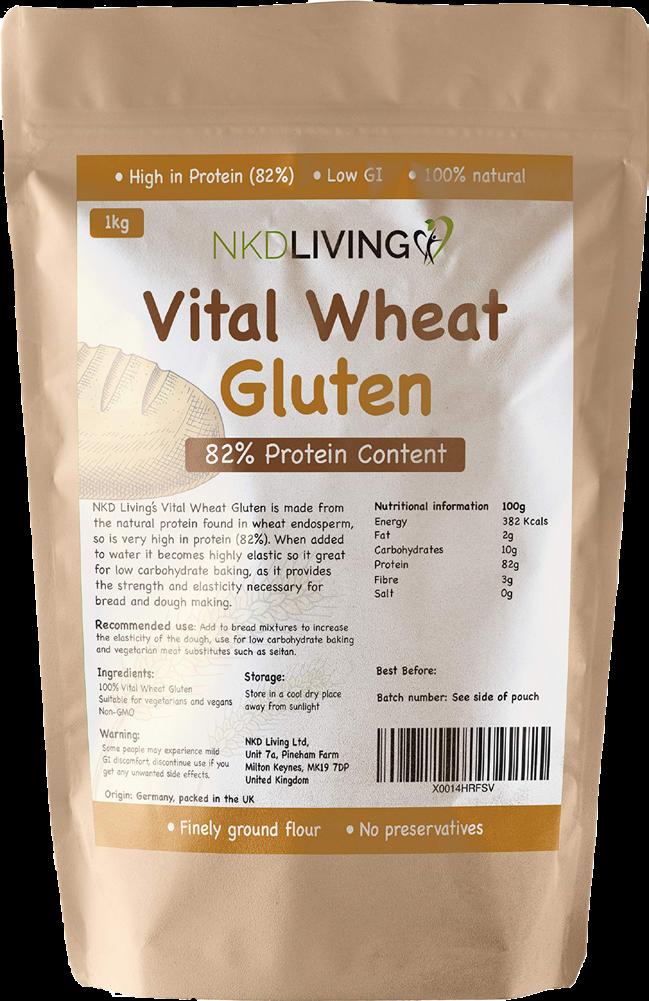
Bakery ingredient supplier Puratos USA offers Intens Tolerance which is their gluten replacement enzyme technology. “Applicable in most baked goods with vital wheat gluten in the formula, these technologies can offer clean label solutions that combine tolerance, strength, and oven jump, that gluten traditionally provides in bread recipes,” explains Sean Hart, R&D manager for Bakery Mixes & Improvers at Puratos USA.
Dutch food and biochemicals company Corbion also recently debuted its Pristine 3000 dough-strengthening solution that reduces the need for adding costly vital wheat gluten. Even
with protein-deficient flour, the new solution produces dough with optimal machinability that results in high oven spring, soft texture, and overall consistent quality in the final product.
"These new ingredients provide significant tolerance to dough during processing, thus reducing waste due to poor dough processing tolerance. It can be used to replace chemical dough strengtheners or gluten," shares Yangling Yin, director of bakery application, Corbion.
Most bread improvers are chemical based making them not bode well with health-conscious individuals who are laying more emphasis than ever before on seeking out natural ingredients that are deemed to offer nutritional value. Market research firm FMCG Gurus found that 69% of consumers say that it is important that products are 100% natural, whilst 62% say that they try to avoid ingredients that sound chemical.
Natural claims are also important in the bakery sector. Indeed, 62% of consumers say that such claims are important when buying bread, 61% when buying biscuits, and 53% when buying bakery products such as cakes and pastries. This shows that even in product categories inherently associated with indulgence, natural claims are important.
Sugar reduction has been the major highlight of the clean-eating consumer trend. However, by simply reducing or removing sugar in baked goods, manufacturers may encounter several new challenges in their sugar-reduced products, including loss of flavor, issues around texture and structure, mouthfeel and indulgence loss, sweetness loss, shelf-life reduction and reduced visual appeal of the final product.
AB Mauri developed Qualitase SR for reduced sugar. The product contains enzymes that help to maintain dough-processing characteristics that change due to sugar reduction. It reportedly works well in a wide array of baked goods including pan bread, rolls, and sweet yeast-raised products like brioche. “We’re constantly evaluating new trends and creating emulsifier, enzyme, and pre-soaked grain solutions that help craft bread bakers achieve their clean-label, freshness, quality, and consistency goals,” explains Rick Oleshak, vice president of marketing for AB Mauri North America.
As global manufacturers move toward phasing out titanium dioxide from formulations, American multinational food company ADM
IN BREAD FORMULATION, EMULSIFIERS WILL STILL HELP THE WATER AND FAT COMPLEX WITH THE STARCH TO INCREASE LOAF VOLUME.
MATT GENRICH, SENIOR FOOD SCIENTIST, CARGILL
earlier this year unveiled its new line of PearlEdge proprietary white color solutions derived from natural sources, including native corn starch. "This rollout meets the evolving needs of customers and consumers, as brands look for titanium dioxide replacements that not only provide a bright white shade but also meet clean-label targets,” explained Hélène Moeller, vice president, Global Product Marketing at ADM.
Puratos has also been working to create enzyme-based clean-label solutions for improved freshness, texture modification, dough machinability, and more. Most recently, the company launched its Intense Puraslim bread improver, which is expected to reduce up to 50 percent of in-dough solid fat in sweet bread and pastry recipes. "Our patented enzyme technologies can lead to significant cost savings in traditionally high-fat products, such as Hispanic sweet bread, and Danish cinnamon buns which is all important considering the volatility in the butter and margarine markets," states Sean Hart, R&D manager, bakery mixes and improvers, Puratos.

Also in line with the health-conscious trend, Cargill spent two-years testing and validating a new clean-label solution using a combination of the company's premium lecithin products and select enzymes to replace legacy synthetic dough conditioning emulsifiers: monoglycerides and DATEM. As a natural emulsifier, Lecithin offers the same porousness, hardness, and friability as DATEM, but in a much healthier and more natural form. Cargill now offers customers three plantsourced lecithin options – soy, sunflower, and canola – in the US and Canada.
Kerry also has in its line of bread improvers, a natural emulsifier alternative known as Puremul. The company says the product is free from major allergens and is kosher-certified and Halal-suitable. Commenting on its launch, Tim Cottrell, Business Development Director for Emulsifiers, Texturants, and Gum Acacia, North America, said “Puremul is the only clean label solution in the market that successfully replaces the functionality of sunflower lecithin and mono- and diglycerides, helping product makers meet the rising market calls for clean, natural, sustainable solutions.”
Demand for a healthier variety of baked goods drives growth and spearheads innovation
Given the pivotal role bread improvers
play in keeping bread fresh and soft, there is a considerable rise in the utilization of bread improvers in the baking industry across the globe. The global bread improver market size reached US$3.4 Billion in 2021, according to IMARC Group. The market research company further projects the market to reach US$ 4.8 Billion by 2027, exhibiting a growth rate (CAGR) of 5.87% during 2022-2027. Increasing consumption of bread and baked goods including, bagels, ciabatta, baguettes, toast bread, pizza base, tortillas, croissant, multi-grain, brioche, and many more are attributed to this growth.
Despite these promising developments, the business is still expected to face significant obstacles, such as shifting customer preferences, strict trade restrictions, and a lack of security in the supply of raw materials and other manufacturing inputs
Snack and bakery manufacturers working with the dough will always face a balancing act when seeking to deliver desired sensory characteristics efficiently. Luckily, suppliers continue to develop new dough conditioners that can rise to the occasion, and the growing interest in clean labels from both consumers and manufacturers will continue to raise the bar on clean-label dough conditioning ingredients. MMEA
FRANCE — Roquette, a French-based global leader in plant-based ingredients, is launching a new line of organic pea ingredients, including organic pea starch and organic pea protein, from peas sourced in a network of organic growers from Canada.
The ingredients produced at the company’s plant in Portage la Prairie, Man., are adapted for the specialized nutrition, non-dairy and meat alternative markets, according to Roquette.
“Our teams created these great products based on consumer needs by leveraging our longstanding expertise in plant proteins and peas,” said Jeremy Burks, senior vice president of plant proteins at Roquette.

“This launch, just five months after Nutralys organic textured protein, reflects Roquette’s ambition to speed up innovation to keep pace with new consumer trends and to continue to be the partner of choice for customers who share our passion for plant-based cuisine.”
Backed by full traceability back to the farm, the new ingredients will launch in North America, Mexico and Europe, with a rollout planned for other markets.
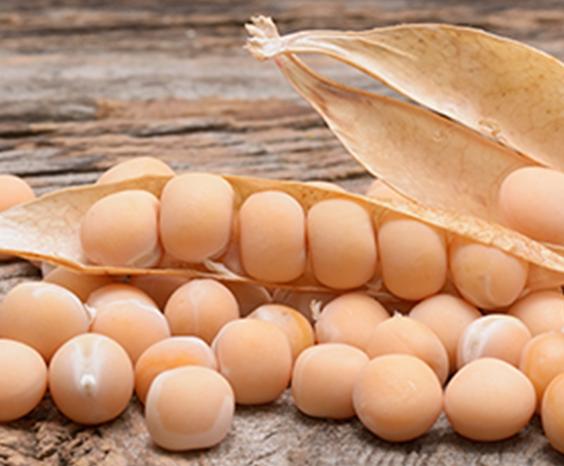
The new line of organic pea protein isolate comes in addition to Roquette’s Nutralys organic textured proteins, which are available in the United States and European markets.
NETHERLANDS — After almost 6 years, Dutch global health, nutrition, and bioscience, Royal DSM has revised its optimum vitamin nutrition (OVN) guidelines to help animals across all species to achieve peak health and performance.
The recent updates feature inputs from researchers, nutritionists, and the feed industry in an effort to ensure the tool reflects changes in the genetics and management of all farmed animals along with advancements in nutritional understanding.
Silvia Sonneveld, VP, essential products, DSM Animal Nutrition and Health (ANH) said the revamped supplementation specifications allow producers to ensure they are feeding animals the optimal amounts of highquality vitamins, appropriate to their life stage and growing conditions.
“Setting optimum vitamin requirements focuses on fulfilling the genetic potential of animals which is improving year after year in a changing world where the use of antibiotics has been drastically reduced,” Sonneveld noted.
She further noted that the update was necessary to make the OVN guidelines
relevant in a world where there is a higher incidence of animal diseases and where there is a growing focus on better immunity, animal welfare and reduced food loss and waste.
This optimization of animal health and welfare directly impacts the performance quality and the nutritional value of animal-origin food, she said.
“Suboptimal vitamin levels can have a huge impact on overall health, putting animals at risk of developing clinical deficiencies and disorders. Achieving the optimal vitamin levels removes many of the roadblocks to good performance, health status and sustainability.”
THE REVAMPED SPECIFICATIONS ALLOW PRODUCERS TO ENSURE THEY ARE FEEDING ANIMALS THE OPTIMAL AMOUNTS OF HIGH QUALITY VITAMINS
 BY DAVID KAMAU AND PEIMAN MILANI
BY DAVID KAMAU AND PEIMAN MILANI
The world is facing a global food crisis like none other, with food prices at historic highs, supply chains disrupted by war and disease, and climate change threatening harvests in virtually all geographies. Global food insecurity is rising so rapidly that hunger pushes one child per minute into severe malnutrition and in 2021, up to 828 million people were affected by hunger.
Sixty percent of global calories come from the big 3 grains (wheat, maize and rice) in refined form. The processing of these grains reduces their volume by 20 to 30 percent and removes even more of their nutritional value. Diets dominated by these refined grains, sugar and ultra-processed foods have become the leading cause of preventable death in the world, linked to rising rates of obesity, diabetes, heart disease, stroke, and some types of cancer. In nearly every country, these
unhealthy foods are ubiquitous and cheap.
A simple shift from refined grains to fortified whole grains would not only produce more nutritious food for billions of people – without increasing production costs – but also help towards the reduction of malnutrition and hunger. This shift would save many cash-strapped governments billions of dollars in food import costs and agricultural subsidies. without requiring a single additional acre of farmland or one more ounce of fertilizer.
Concerns have been raised about the shelf life of whole grain products, their costs as well as consumer acceptance. Advances in food processing technology make it possible for many whole grain foods to have a shelf life of six months and longer and it has been demonstrated that the production of whole grain in bulk costs less than that of refined grain. But
despite these obvious benefits, food production remains centered on refined grains.
Consumer preferences are changing with increased acceptance of whole grain foods across different demographics. In Rwanda, there has been an increased adoption of whole grain in school meals. In trials undertaken in 18 public schools where 13,700 children were served whole grains in the daily corn meal served for lunch, many children reported that it made them feel fuller and more energetic. Over 90 percent of children in grade six preferred the whole grain meal when they were sensitized about its benefits. In Denmark, consumer education, including through packaging logo, increased consumption of whole grains by 75 percent between 2007 and 2014.
With the world facing an escalating food and hunger crisis, action needs to be taken that would save lives and begin to steer food systems toward healthier outcomes. Today a lot more is known about the nutritional value of whole grains and the ramifications of refinement.
Three key actions could support the transition from refined to whole grains within a relatively short time: –
The shift by institutional purchasers of food to buying whole grain is a powerful means of increasing demand. African governments feed an estimated 10 to 30 percent of their populations through safety net programs, school feeding programs (which alone reach more than 60 million
children on the continent), hospitals, prisons and other public institutions. A shift from refined to whole grain purchasing within these institutions could have significant impact and influence broader change across the food system. In addition, shifting government subsidies for refined grains to whole grains would also help influence the market.
Public agencies and private companies should promote whole grain consumption among consumers, sharing evidence of the nutritional benefits. Whole maize flour has 24 percent more protein, 3.8 times more fiber and 3.5 times more calcium than refined flour. And that’s just for starters. It is also richer in iron, zinc and vitamin E. With added micronutrient fortification, whole grains could help overcome devastating malnutrition, strengthening bodies and minds.
Modest investments are needed in the milling sector in order to make the switch from refined to whole grain. Millers require affordable financing as well as partners and Governments, development organizations and private food companies should be at the forefront to drive these investments. In Rwanda, mid-sized and small milling operations have started to make this switch based on initial investments in the tens of thousands of dollars, and expect to see these investments recouped and turned into a profit within a few years.
The global food crisis and its underlying causes, which are deep and systemic, would not be solved by the switch from refined to fortified whole grains. Bigger transformations are needed and these include enabling the development of diverse, equitable, and regenerative food systems that not only nourish people but also the natural ecosystems essential to growing good food. However, shifting to whole grains is an important and highly feasible step, even as we come to grips with the profound dysfunctions of the broader food system. Its benefits would also begin immediately and would only grow over time. A whole grain transition today will take us one step closer to a world that provides good food for all.
David Kamau is the Managing Director of the Fortified Whole Grain Alliance. Peiman Milani is a Director of the Food Initiative at the Rockefeller Foundation. MMEA
PUBLIC AGENCIES AND PRIVATE COMPANIES SHOULD PROMOTE WHOLE GRAIN CONSUMPTION AMONG CONSUMERS, SHARING EVIDENCE OF THE NUTRITIONAL BENEFITS.
Number of copies Number of years
NOTE: An invoice will be generated once we receive this form


Would you like us to have a feature on your company? Yes
Please complete the following details
Telephone: Website:
Email:
What best describes your main business activity (e.g. hospital, banking, consultant, packaging supplier, NGO)


What best describes your job:
Chairman, CEO, Director General Management
Sales/Marketing
QA/R&D
Others (specify)
Applicant’s Signature & Stamp:
Date:
Purchasing/Supply chain
Process Management
We patented our powdered, whipping-active cake emulsifiers over four decades ago, and to this day they provide a series of benefits to producers of long-life cake manufacturers around the world.

Our Palsgaard ® SA Series is the perfect alternative to cake gels and shortenings when you’re looking to optimize your cake recipe. They can also help to reduce your egg content – bringing some serious potential cost savings.
Find
Ensures soft, moist and delicious cakes
Convenient powder form – no need for refrigeration
Available from our warehouses across Africa
Produced in Denmark